Samsung DU7192 is a very budget-friendly solution that is primarily suited for typical Sunday viewing. The television performs best during daytime viewing, as ambient light effectively masks its less-than-ideal black levels. Thanks to the IPS panel, colours will maintain their hues and saturation even from an angle. The brightness of the Samsung DU7192 also suggests the usage it will excel in, namely television or YouTube, as HDR content on streaming platforms will be too dark. The biggest advantage of the television is the colour reproduction after calibration, as they are of good quality and allow for viewing content that is quite similar to what the film director intended. Praise for the image quality is also warranted for the quality of tonal transitions, which definitely stands out as a hallmark of this television, placing it well above its competitors. Regarding smaller features that can be considered good in the Samsung DU7192, compatibility with computers and the operating system are noteworthy. The former performs exceptionally well, and thanks to the correctly implemented chroma 4:4:4, the tested television can successfully serve as a monitor, as the readability of text will be at a high level. The system operates very smoothly and efficiently. During the tests conducted, there was no situation where it froze. Additionally, the default media player is excellent and handled practically every file we prepared for it. So, who is the Samsung DU7192 for? Primarily for less demanding individuals, for whom the television serves merely as a small escape in their daily routine. The DU7192 Samsung features a modern and elegant design that will fit into most interiors. The matte frame finish adds style to the device and makes it not only a functional but also an aesthetically pleasing element of living room decor. It’s worth noting that the Samsung DU7192 has an exceptionally thin profile, making it easy to mount on the wall, thereby saving space in the room. This is an ideal solution for those who wish to enjoy minimalism in their interiors without compromising on high-quality equipment.
- Matching (Score)
- Our verdict
- TV appearance
- Where to buy
- Contrast and black detail
- HDR effect quality
- Factory color reproduction
- Color reproduction after calibration
- Smoothness of tonal transitions
- Image scaling and smoothness of tonal transitions
- Blur and motion smoothness
- Console compatibility and gaming features
- Input lag
- Compatibility with PC
- Viewing angles
- TV efficiency during daytime
- Details about the matrix
- TV features
- Apps
- Playing files from USB
- Sound
Samsung DU7192 (IPS) vs Samsung Q8F
Direct compare
DU7192 / DU7172

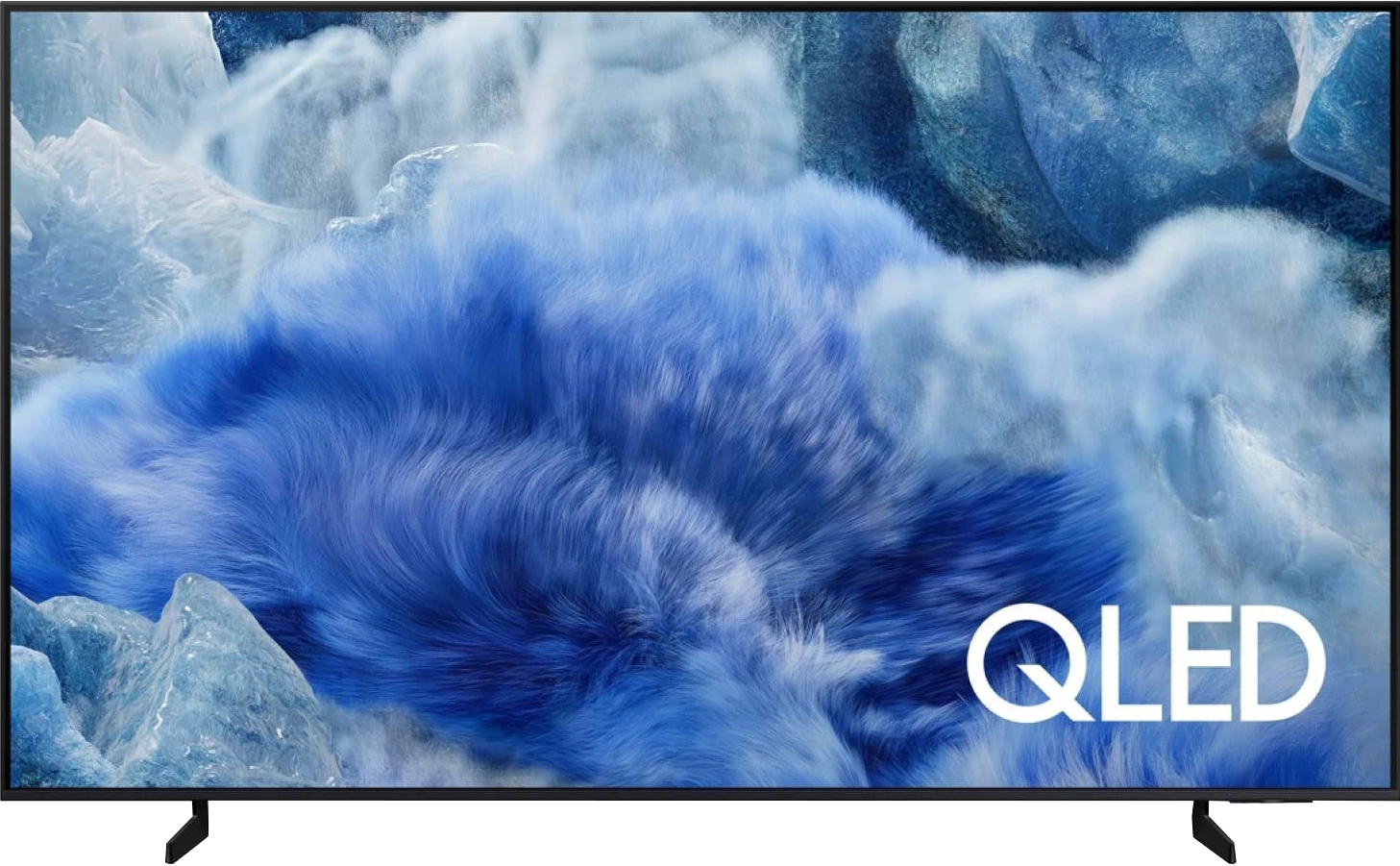
Panel type: LCD IPS
Resolution: 3840x2160
System: Tizen
Model year: 2024
Complete the survey to find out the result

Panel type: LCD VA
Resolution: 3840x2160
System: Tizen
Model year: 2025
Complete the survey to find out the result

Overall rating
5.0
6.3
Movies and series in UHD quality
4.6
6.3
Classic TV, YouTube
4.2
6.0
Sports broadcasts (TV and apps)
4.8
5.1
Gaming on console
6.4
6.9
TV as a computer monitor
6.0
6.0
Watching in bright light
2.8
5.6
Utility functions
5.5
7.3
Apps
8.7
8.7
Sound quality
5.4
6.0
Complete the survey to find out what fits your preferences
Advantages
Excellent cooperation with the computer - low input lag, chroma 4:4:4
Faithful colour reproduction after calibration
Minimal colour degradation at an angle
Smooth operation of the Tizen system
Solid contrast thanks to the VA panel
Pretty good brightness in SDR and HDR (up to about 500 nits)
Satin finish does well with reflections
Tizen operating system – fast, intuitive, with a rich app selection
Solar remote with USB-C charging
Integration with the SmartThings ecosystem
Great input lag
Good font readability when working with a PC, suitable as a text work monitor
Adjustable stand on multiple planes
Disadvantages
Low brightness of HDR materials
No tone transition smoothing feature
Average image scaling
Severely limited features for gamers (no VRR in practice, no HGiG)*,
No USB recording or PiP functionality
Average digital image processing
*We hope that the promises on the promotional brochures will be quickly fulfilled through software updates.
Our verdict
Samsung Q8F is quite a successful continuation of the Q67D model. It offers similar image quality in HDR content, and with a brightness of around 500 nits, it creates an effect that is hard to call ordinary. The support for the HDR10+ format also helps, which has been competing with Dolby Vision for some time and provides comparable experiences in many productions. The contrast is another plus – for a VA panel, it holds up well and allows for enjoyable blacks in movies and series. However, the biggest asset of the Q8F remains its operating system. Tizen runs quickly, provides access to many applications, and works well with the SmartThings ecosystem, so the TV can easily be integrated into a larger network of home devices. Interestingly, the Q8F also has a niche use – thanks to very good font readability, it works excellently as a screen for text work. Additionally, the adjustable stand allows the TV to be placed on virtually any desk or in a narrower TV cabinet. The biggest drawback, in our opinion, is not the image quality itself – as it's hard to expect miracles in this price class – but rather what has happened to the features for gamers. Due to updates, options such as VRR and HGiG, which were available even in simpler constructions in previous generations, have disappeared. In fact, the manufacturer even boasts about the availability of these features in their catalogue. This makes it hard to recommend the Q8F to anyone planning to connect a console and counting on full support for new technologies. Therefore, the Q8F is a TV that can appeal – primarily due to its design, above-average image quality, and efficient Tizen system. But at the same time, a step backward compared to its predecessor is evident. Let's hope Samsung can quickly rectify these shortcomings, as otherwise, even such a successful “everyday” TV may leave some users feeling unsatisfied.
TV appearance





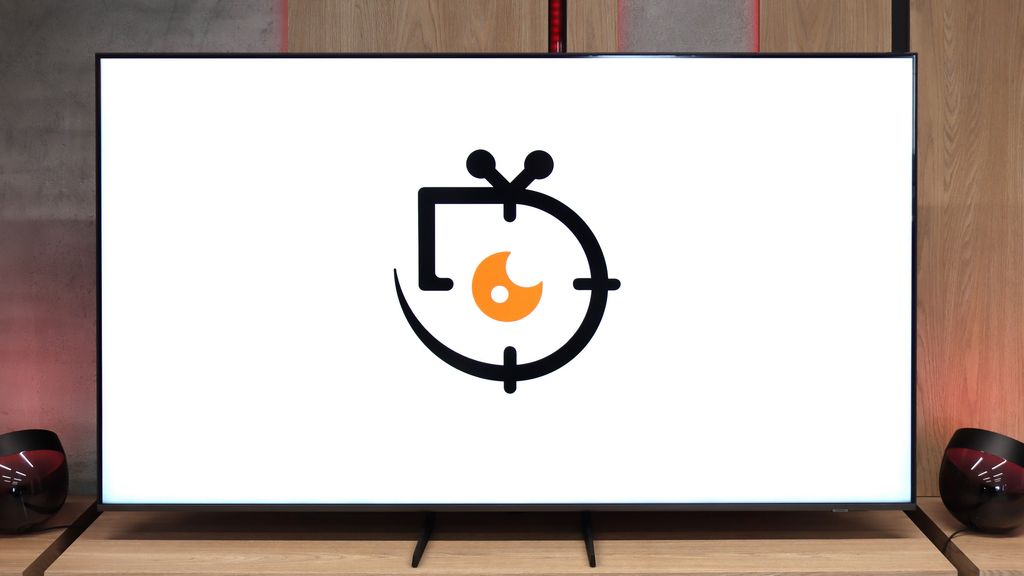
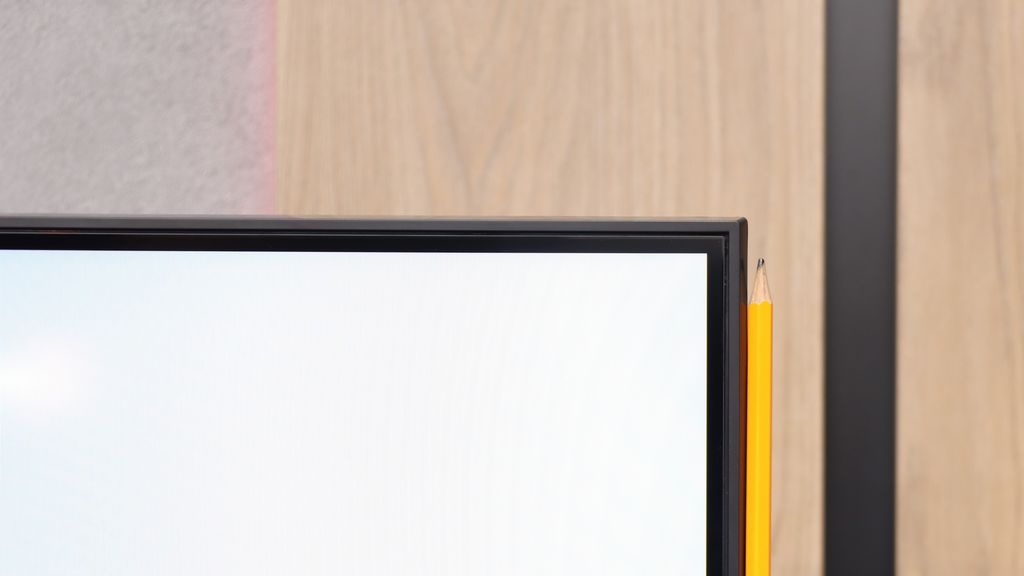
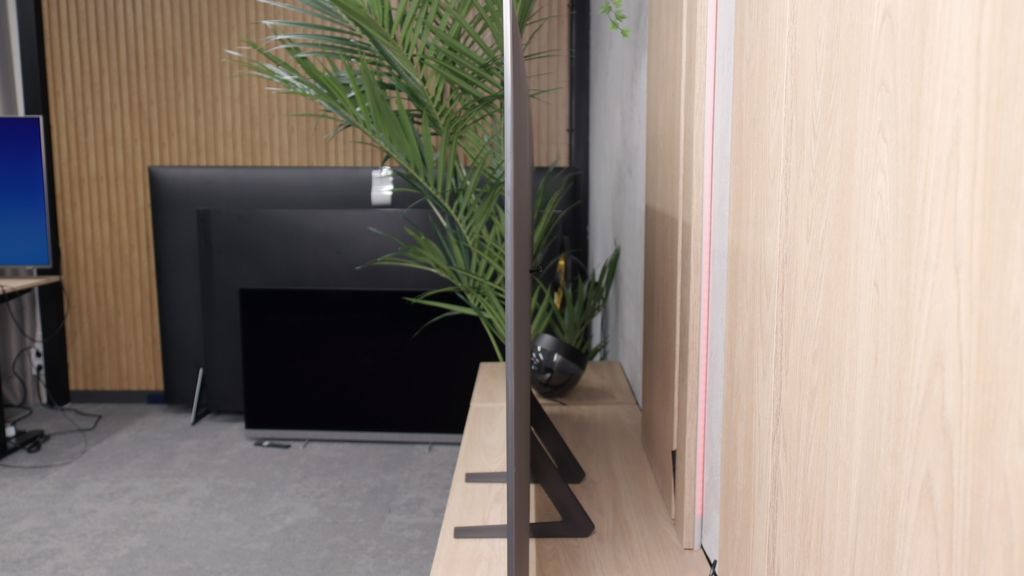
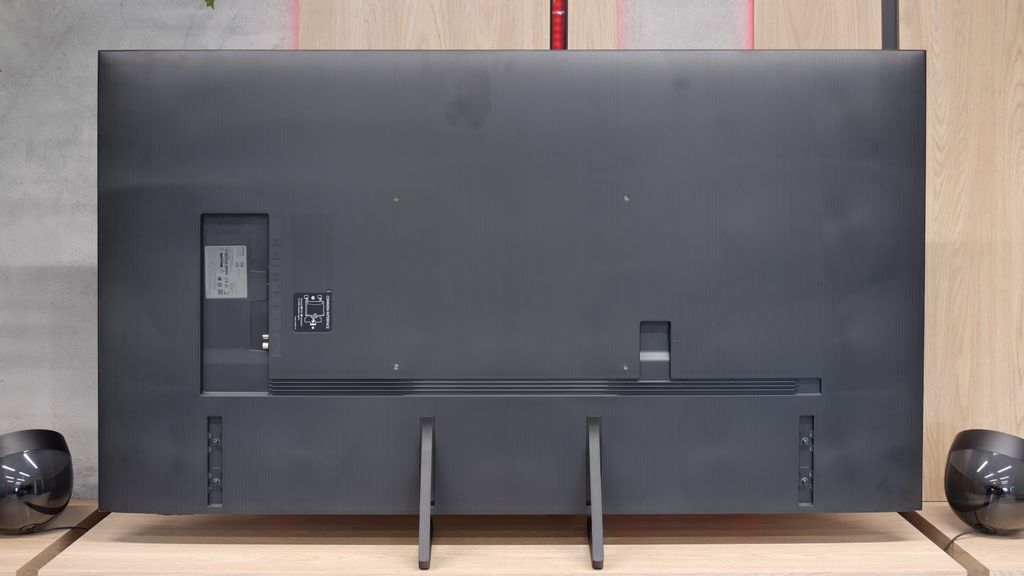
Contrast and black detail
1.6/10
5.5/10
Local dimming function: No
Local dimming function: No
Contrast:

Result
800:1

Result
950:1

Result
900:1

Result
900:1

Result
800:1

Result
5,200:1

Result
4,650:1

Result
3,650:1

Result
4,100:1

Result
4,150:1
Halo effect and black detail visibility:

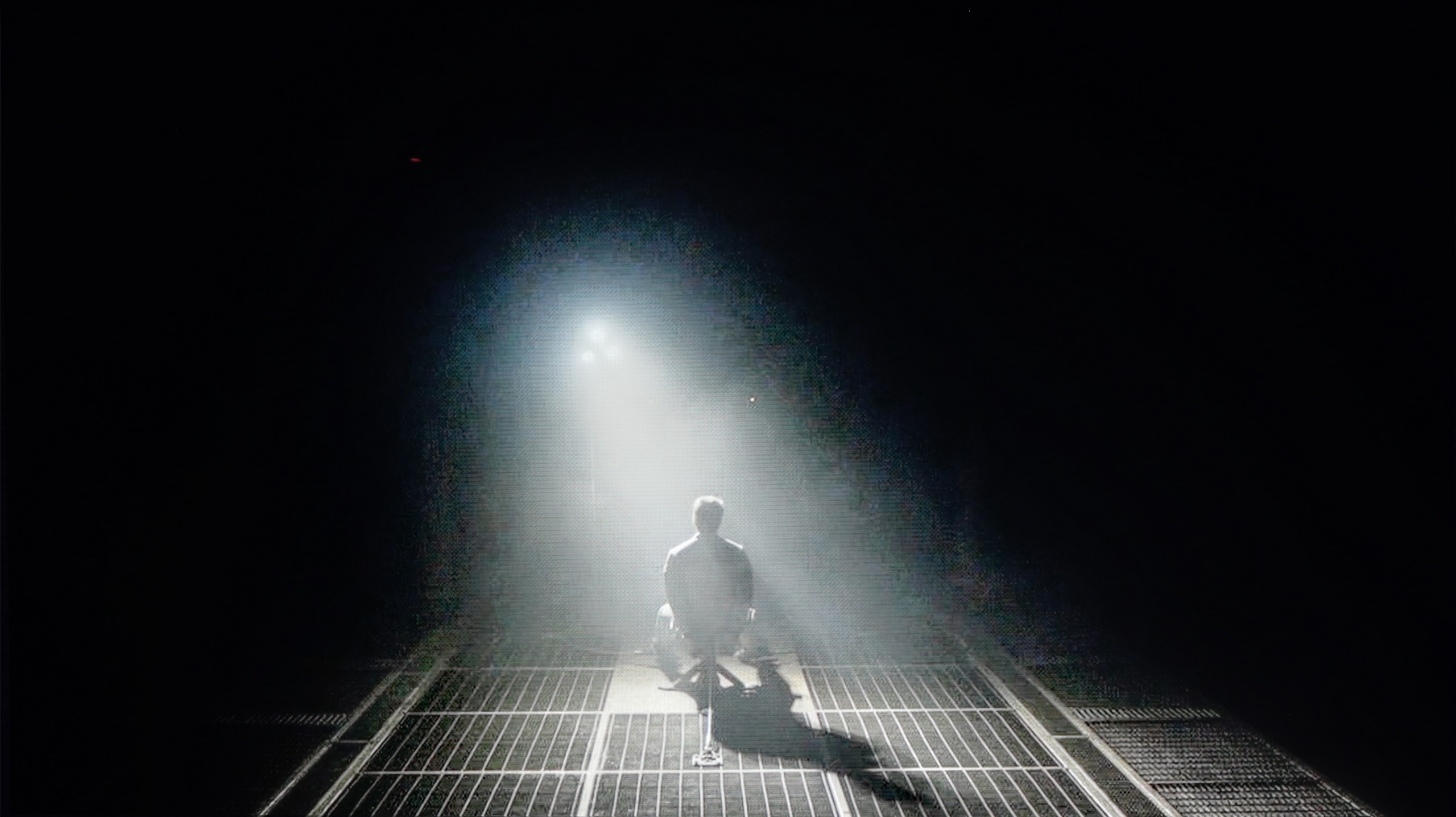
Samsung DU7192 uses an IPS panel, which, as can be seen, does not boast the highest contrast and black levels. Measurements indicated that the tested television can only provide maximum values of 950:1, which is a very low result and unlikely to promise high efficiency in the context of home cinema. However, it is worth noting that we are testing the 43" version, so a different size may have a different type of panel. Regarding the panel used in Samsung DU7192, it belongs to the lower-end categories of IPS screens, as these can deliver much higher results. However, it should also be remembered that we are dealing with a very budget-friendly unit, which will primarily find its use in a secondary room, or will serve as a cheap receiver for a senior, for whom the quality of the displayed image is often irrelevant. In the first image from the film "Oblivion," we primarily see navy black, but also very good separation of lights coming from the spotlight. For better visibility, we recommend taking a closer look at the image in zoom. And just as there was no significant reason to deny the TV's performance in the first scene, in the second scene from "Sicario 2," it can be said that this does not require further comment. Due to the practically zero contrast, the scene lacks any depth. There are also very noticeable bright spots in the corners of the panel, which are typical of budget units. On the positive side, the detail sharpness is quite good, however, that is searching for any positivity against the backdrop of disappointing results.
Samsung Q8F uses a VA LCD panel, which immediately puts it in a good position regarding contrast. By nature, such panels offer deeper blacks than IPS panels, and you can actually see this effect here. On test patterns, the contrast ranged from about 4000:1 to even 6000:1, which practically results in a surprisingly engaging image, especially in a slightly dimmed living room. Of course, this is not the level of LCD screens with local dimming, let alone OLED — sometimes the blacks can verge on a shade of navy, and the overall image can appear flat. However, Samsung employs a simple trick: so-called global dimming, which dims the entire screen when there are many dark sections. The effect can be impressive, but it comes at the cost of losing some details, which may not appeal to everyone. Nevertheless, the Q8F still performs significantly better than televisions with IPS panels, offering solid contrast and blacks that can immerse you in the cinematic atmosphere.
HDR effect quality
3.4/10
5.2/10
Luminance measurements in HDR:

Result
200 nit

Result
228 nit

Result
246 nit

Result
233 nit

Result
245 nit

Result
473 nit

Result
417 nit

Result
457 nit

Result
210 nit

Result
471 nit
Scene from the movie “Pan” (about 2800 nits)

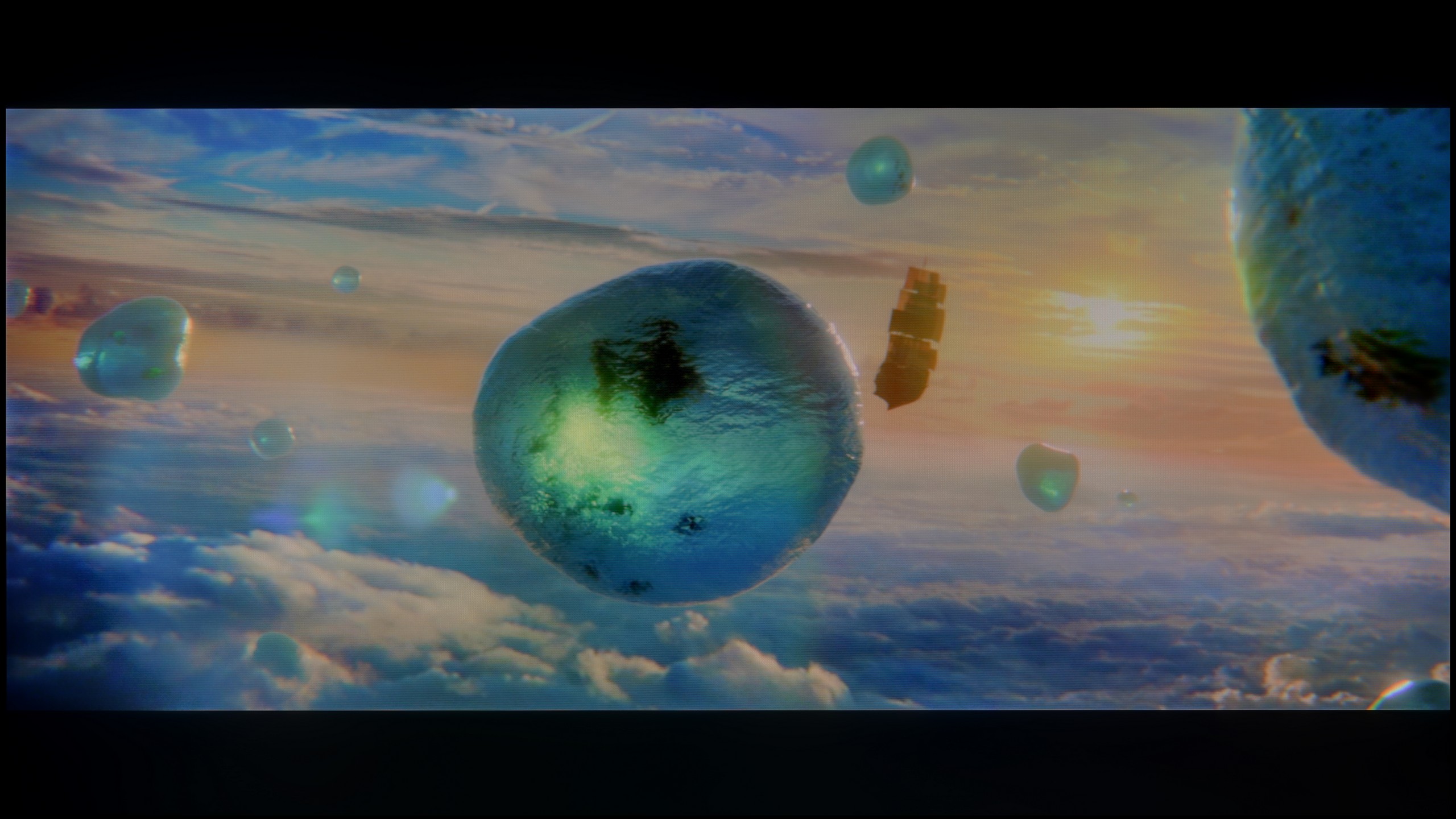
Scene from the movie “Billy Lynn” (about 1100 nits)

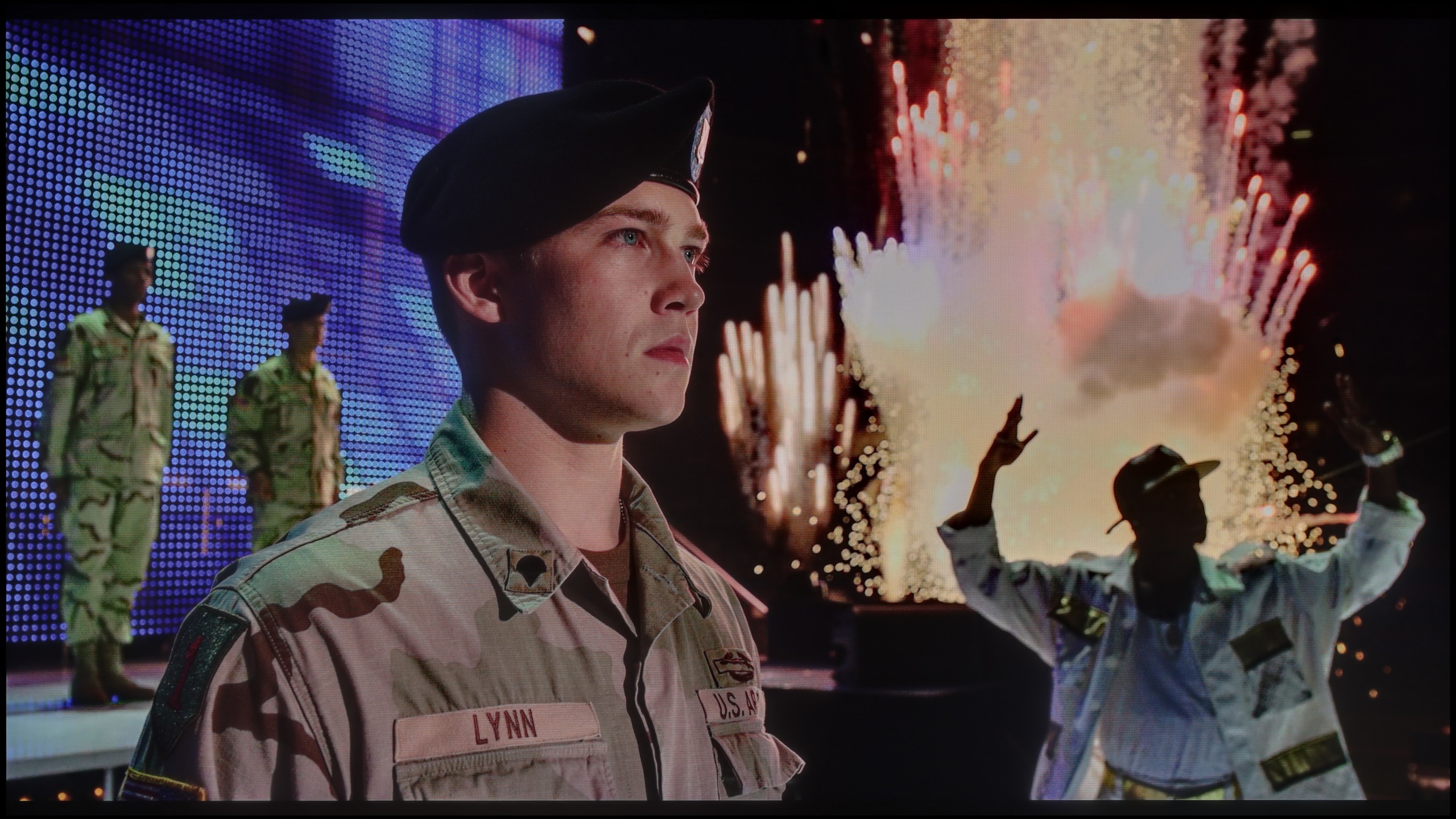
Static HDR10


Dynamic: HDR10+
Dynamic: HDR10+


HDR luminance chart:
Samsung Q8F
HDR luminance
Samsung DU7192 (IPS)
HDR luminance
The maximum luminance in HDR materials is 245 nits, which is often surpassed by even lower results. Such values will definitely not be sufficient for comfortable viewing of HDR materials, due to the lack of appropriate image dynamics and colour distortions caused by the low brightness of the unit. Although the manufacturer has equipped its device with an HDR format offering dynamic metadata, HDR10+, which is what we're talking about, is very rarely used compared to Dolby Vision, which Samsung has not yet introduced in its televisions. It’s also worth mentioning that Samsung DU7192 offers only 82% coverage of the wide DCI-P3 colour gamut, which is another reason we shouldn't provide a signal in a wide dynamic range, as colour losses will be very noticeable. Samsung DU7192 delivers high-quality image that will satisfy most users.
In terms of brightness, the Samsung Q8F performs surprisingly well for a TV without local dimming. It measures up to 500 nits, which in practice means that most movie and series scenes look pleasant, and it cannot be faulted for lacking the "HDR effect." In films like Life of Pi or The Meg, the screen can burst with bright light, delivering a level of lighting effect that is satisfying. It struggles more in challenging moments—such as dark scenes with single bright points. The global dimming used causes the TV to darken the image to maintain deep blacks, but at the expense of detail brightness. This is clearly visible in the scene from Sicario 2, where the brightness of the helicopter lights dropped to around 200 nits. This is a deliberate design choice that gives the impression of deeper blacks but takes some shine away from individual elements, and one should simply keep that in mind. Regarding colour reproduction, the Q8F uses quantum dot technology, which expands the colour gamut. A coverage of the DCI-P3 palette at 91% can be considered a decent result, although it is not a record-breaking figure compared to other QLEDs.
Factory color reproduction
4/10
4.6/10


Factory Mode
After calibration
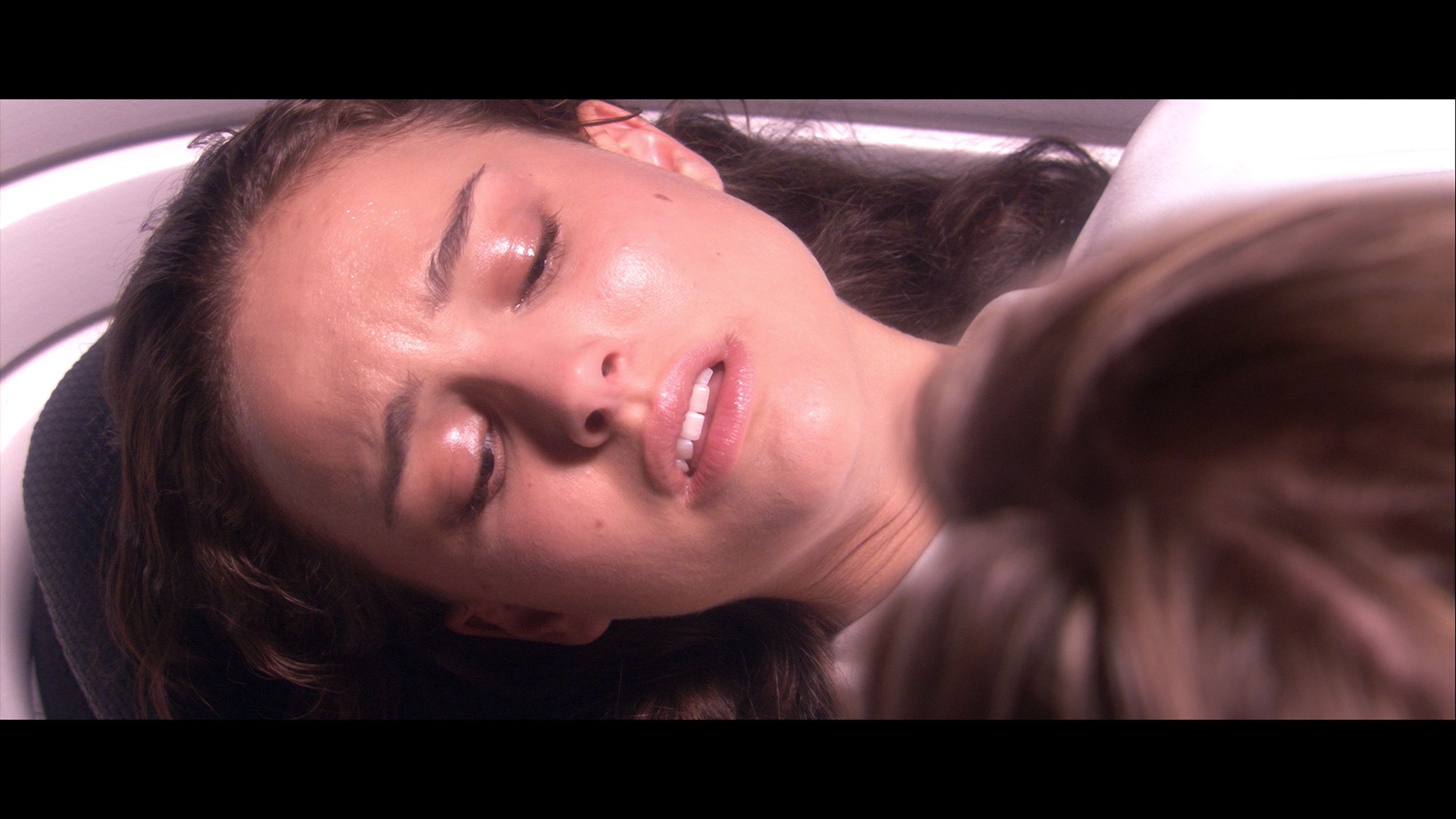
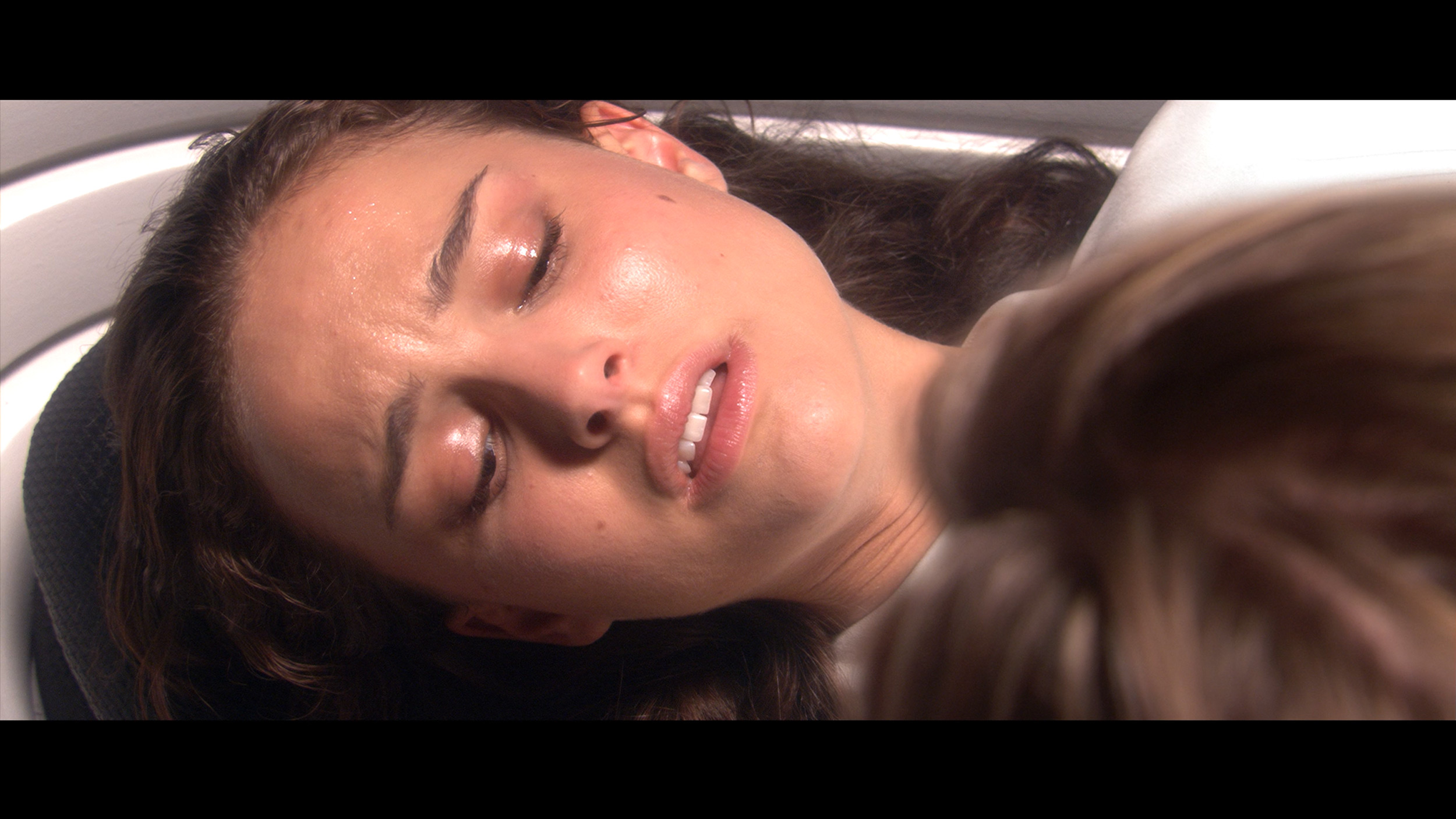
Factory Mode
After calibration
The best factory mode we used throughout the testing process was "Filmmaker". This, like the vast majority of modes, had its flaws. Starting with the most basic graph, which is white balance, we can notice a significant dominance of red colour, both in SDR mode and HDR. Although in the latter there was also some green, which didn’t have a major impact on the overall perception. A graph with such results, in both cases, gives us an image characterised by strong yellowing, clearly visible on whites and on the faces of the actors. Another important graph, if not more important, is gamma. This, which is supposed to control contrast in materials with a standard colour palette, was quite good in factory mode with one "but" regarding the beginning. In the darkest scenes, it was significantly lowered, resulting in strong brightening, which left the film lacking contrast and suspense overall. As we mentioned, HDR materials regarding white balance remained at a similar level. The main change is the EOTF curve graph. At the very beginning, we can observe a bulge, which, just like in the case of gamma, strongly brightened the darkest scenes. However, after that, the graph significantly changed its characteristics and the measured result dived below the reference line, causing the film to lose even more dynamism.
We decided to check out the Filmmaker mode because right out of the box it gave us the best picture. However, that doesn't mean it was perfect. The white balance had too much of a blue and red tint, causing the whites to lean towards a slight purple-pink hue. Such imbalance affected the visibility of virtually all colours, which is clearly seen in the comparison photo below. The brightness characteristics in SDR content were quite well calibrated, although in HDR materials we noticed that the TV didn't always handle its global dimming well — at times the screen was too dim, while at other times it could suddenly brighten up. Fortunately, issues related to colours can be effectively corrected with calibration tools, so we decided to get to work.
Color reproduction after calibration
5.9/10
7.8/10




Samsung has equipped even its lowest-end TVs with advanced tools for carrying out the calibration process. So we got to work, and the results of our efforts are more than satisfactory. The white balance, which previously had a strong yellow tint in both scenarios, now looks much, much better, even if there are slight deviations from the norm. The picture will still look significantly cleaner than it did before the calibration process. We managed to model the gamma in SDR materials very well, allowing the image to be as contrasty as the TV permits. The EOTF curve has also changed its face and doesn’t brighten or darken the image in such a drastic manner. However, it is worth mentioning that in the case of HDR materials, the deltaE errors are still very high, but this is due to the unit's insufficient brightness.
After calibration, we managed to correct the white balance to almost perfection. Older SDR content looks fantastic — most errors are within a value of 2, which is definitely below the threshold of human perceptibility. In HDR, we also brought the white balance to an acceptable level, but a different problem arises here. So why are there still relatively large errors in colour reproduction? This is mainly due to the limited colour palette and the way the television manages brightness. The global dimming technique used does not give the user control in the settings, so analysing the EOTF curve in HDR films, it's clear that the Q8F can modify luminance on its own. This can be seen as a limitation, but still, the image after calibration is much more enjoyable to watch than in the factory version.
Smoothness of tonal transitions
7.7/10
9/10

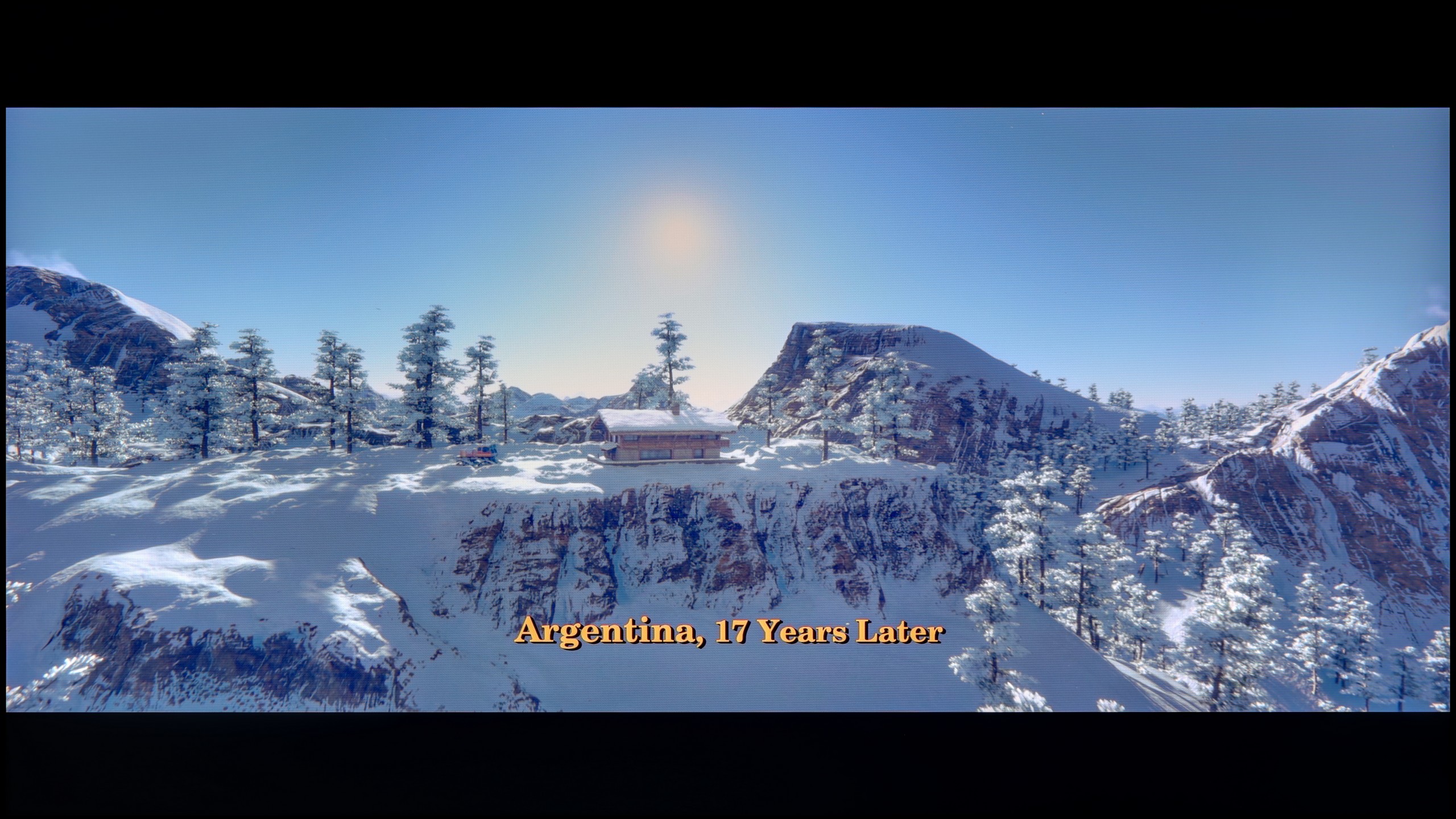



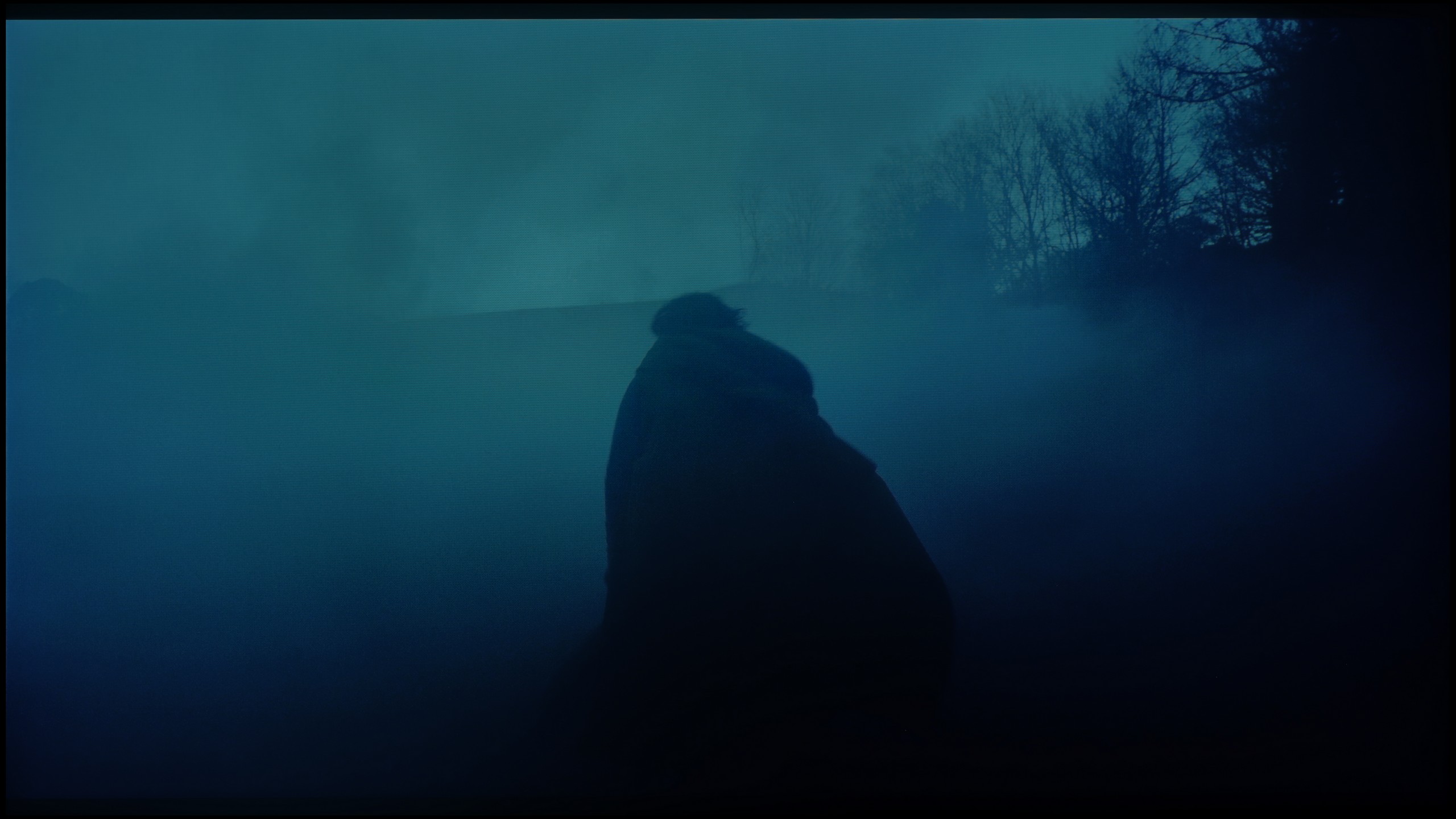

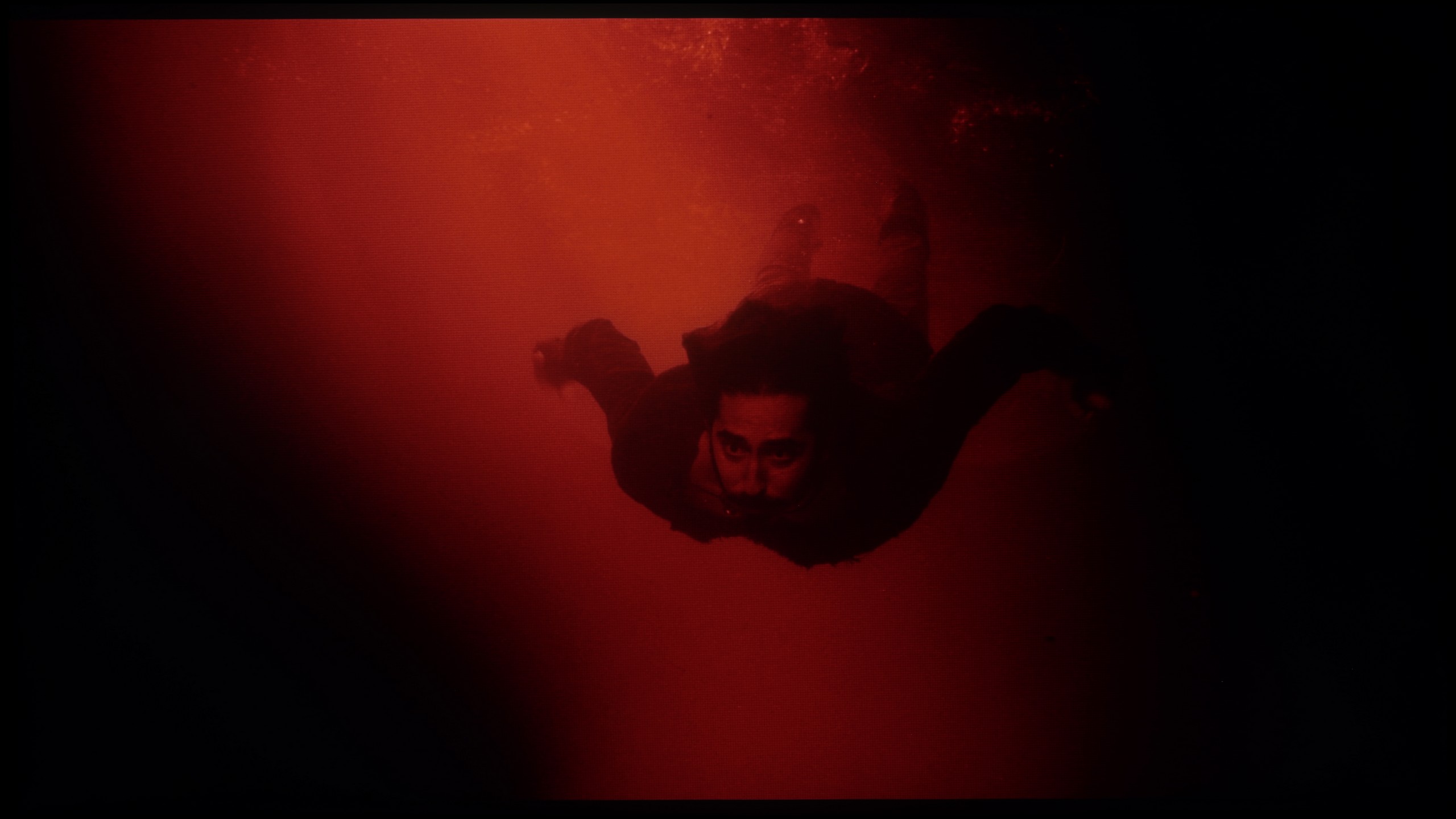




The place where we must praise the TV Samsung DU7192 is our procedure for checking the smoothness of tonal transitions. The tested TV handled them very smoothly, and in practice, there is nothing that could cause us any inconvenience. The only place where something can be noticed is in the last scene and slight posterisation in the reds on the left side. At this point, we must mention one more issue, which is no longer related to this testing procedure. Namely, on the vast majority of scenes, there are noticeable strong inconsistencies in the backlighting, which will be much more bothersome when watching in the evening.
The fluidity of tonal transitions in the Q8F performs really well. The television beautifully blends colours, both in bright segments of the sky and in darker scenes, where visible "steps" in colour can easily occur. Admittedly, sporadic errors do happen, but you have to look closely to catch them. In practice, while watching movies or series, the picture looks cohesive and doesn’t get distracted by any artefacts. Therefore, the rating in this category had to be high. 😉
Image scaling and smoothness of tonal transitions
3.2/10
5/10
Smooth transition function

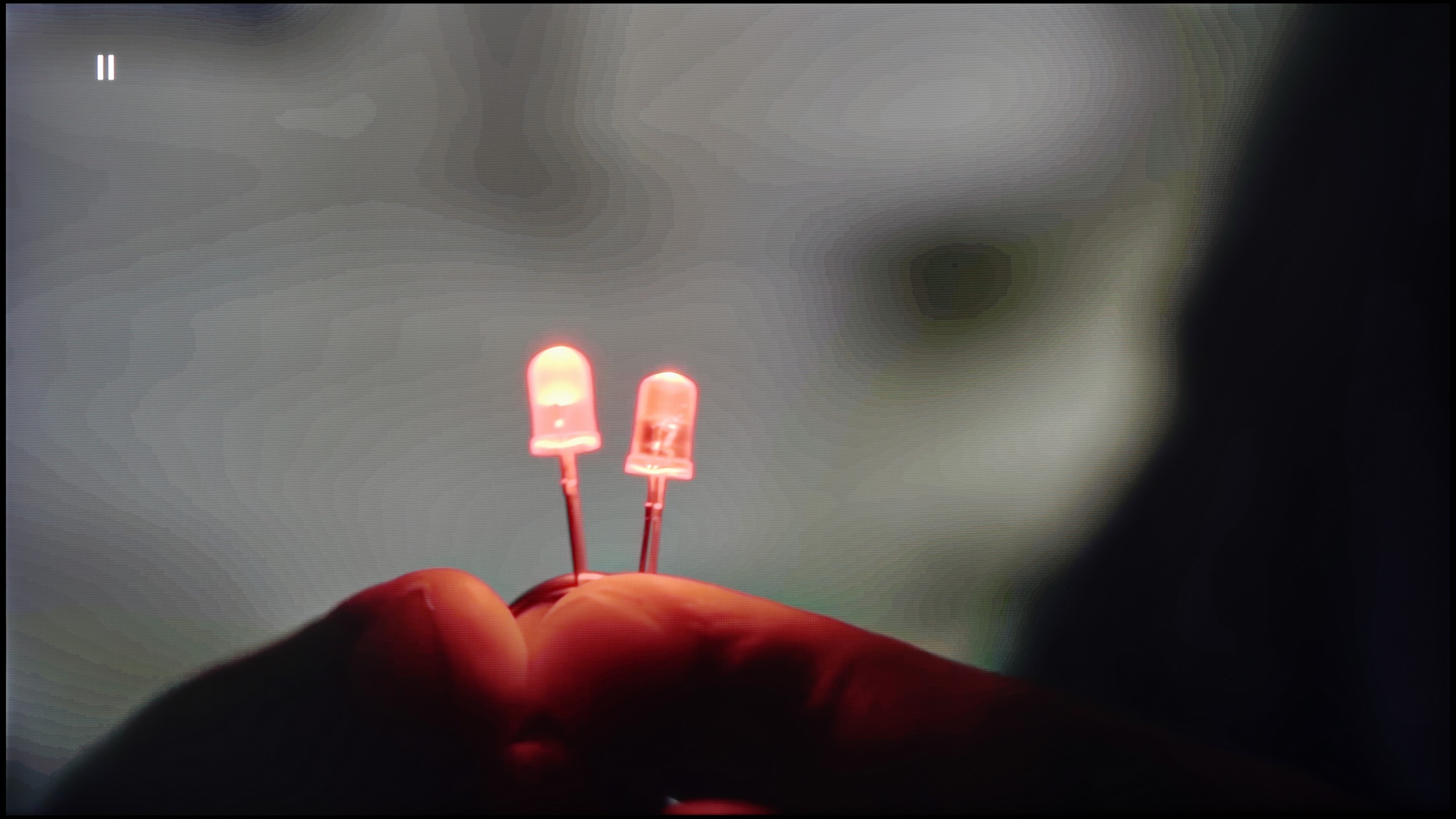
Image without overscan on the SD signal


Let's return for a moment to the tonal transition smoothing function. We can set it in only two ways - off and auto. As you can easily guess, the first of these causes significant issues with gradation. However, if we set the second option, both movies and series will offer us smooth colour transitions. It is worth mentioning, though, that this function has its drawbacks. It heavily interferes with the director's intent, softens the film grain effect, and worse, often misinterprets small details, blurring them as well. Consequently, we consider that this function does not exist and do not recommend using it, as this is how the smoothness of tonal transitions was tested on the tested display.
The next thing we will check in this paragraph is the image scaling process, which is extremely important when watching material in lower resolution. Unfortunately, as this is the manufacturer's lowest model, this function doesn't work very well. All details are heavily blurred, and a characteristic white halo forms around the characters.
Let's see how the Q8F handles older content, which often has poor quality. Starting with the positives: the upscaling works really well. The TV performs nicely with both classic television and materials from YouTube, not giving the impression that we're dealing with something completely unattractive. It struggles more with content in very low resolutions, such as 576p — the image can be cropped, and unfortunately, the overscan phenomenon cannot be disabled. Moreover, the digital processing does not look great either. The noise reduction feature, instead of removing unwanted artefacts, smooths out almost everything: film grain (which many viewers desire) disappears along with the texture of the image, and actors' faces start to resemble characters from cheap Turkish soap operas. It's hard to consider this option useful — it's best left completely off. Perhaps Samsung will refine the function’s performance in updates, but for now, it’s difficult to view it as anything other than an unnecessary addition.
Blur and motion smoothness
4.9/10
4.5/10

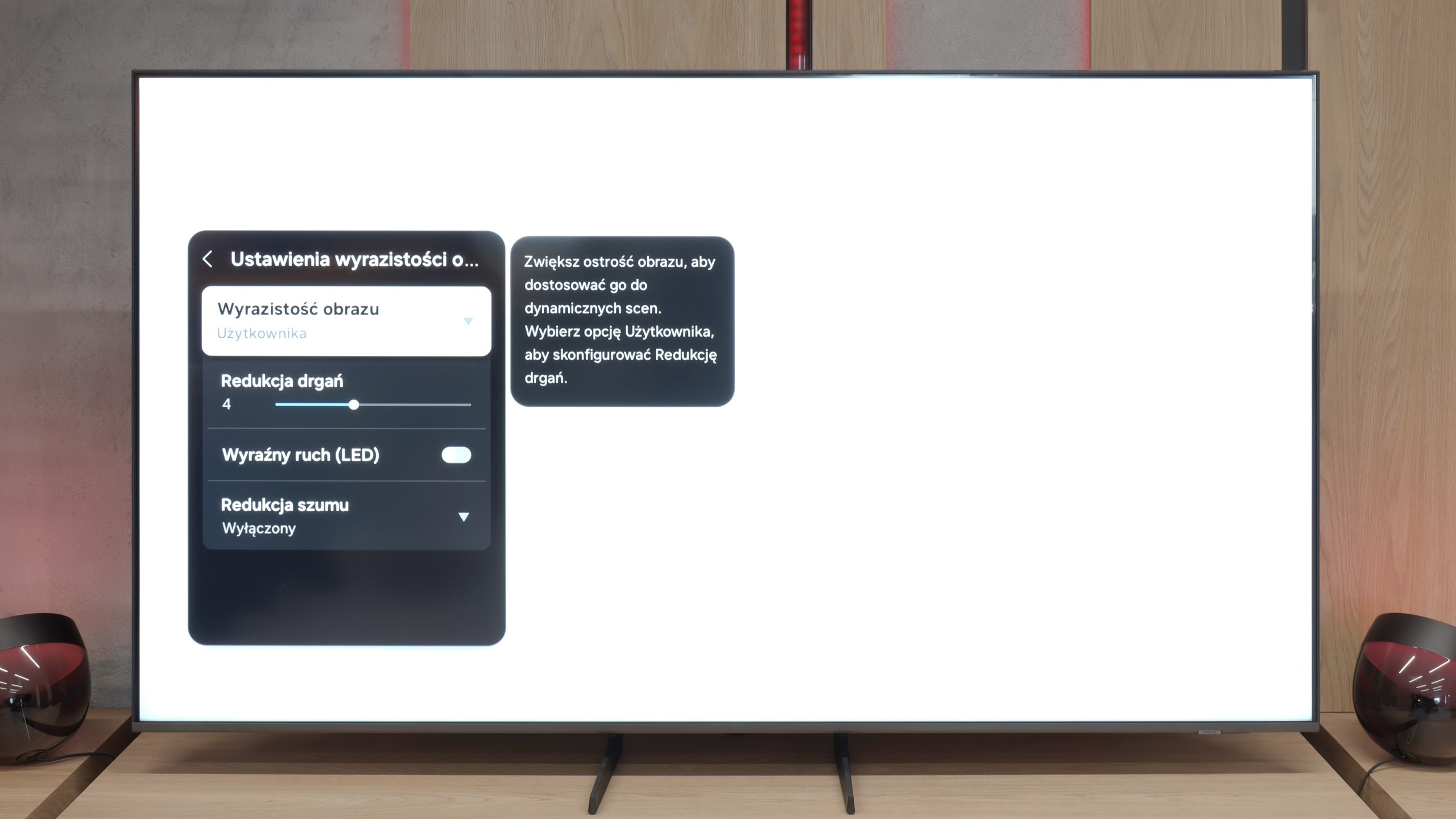
Blur (native resolution, maximum refresh rate):



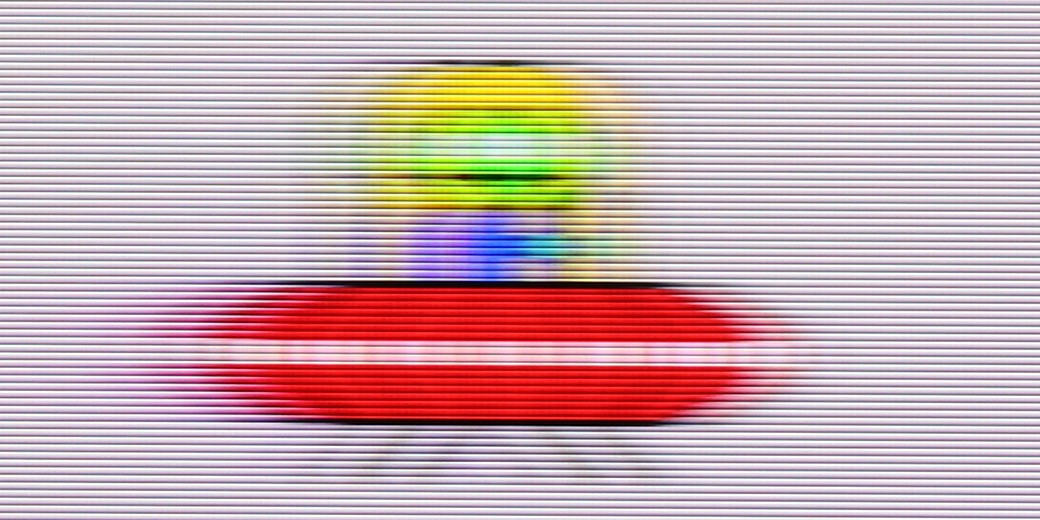
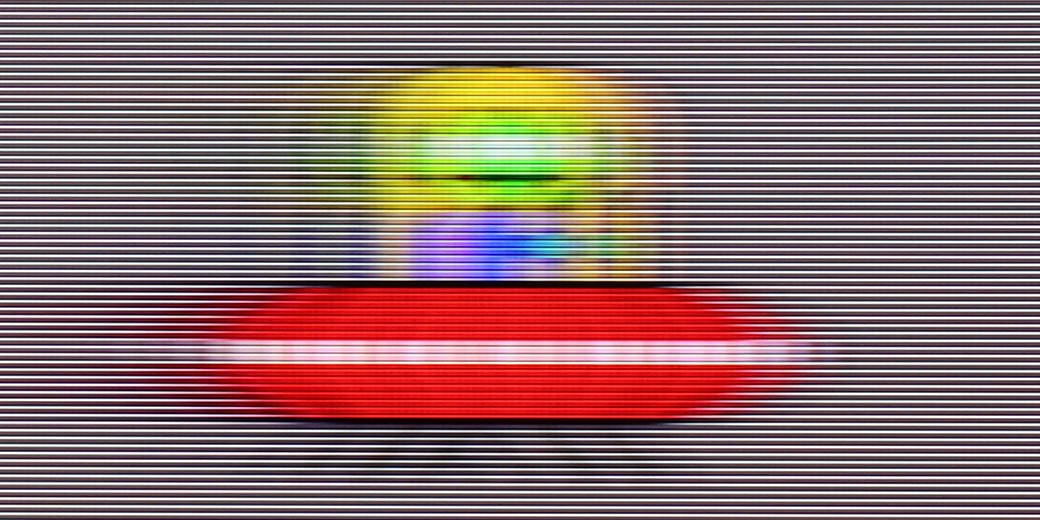
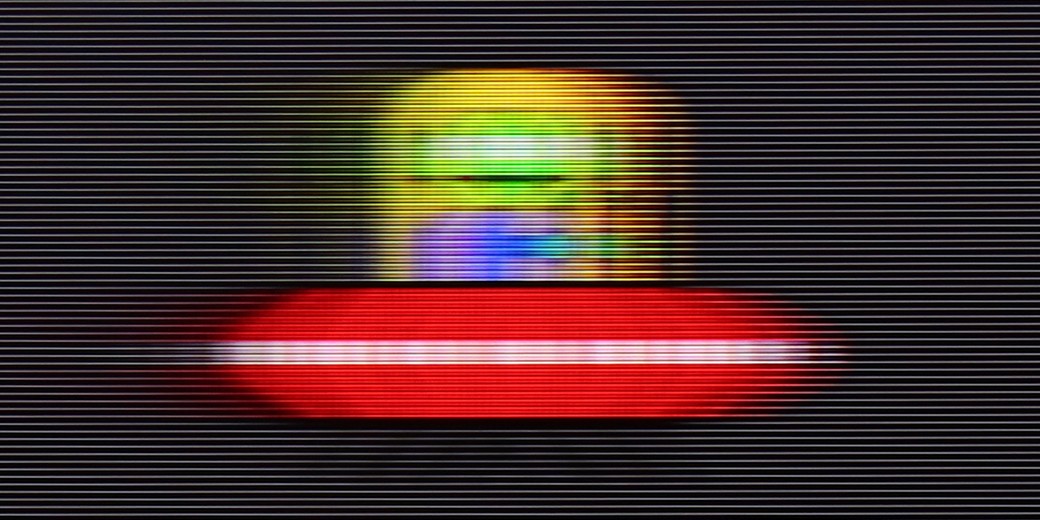
Blur (BFI function enabled):



Despite the fact that Samsung DU7192 is the lowest model in the manufacturer's portfolio, it has implemented a motion smoothing system. Although it is quite limited in features compared to higher models, its very existence is a significant plus in the context of competition in a similar price range. The maximum refresh rate that we will give to the tested television is 60 Hz, which is entirely sufficient for films and series, although not when it comes to sports. In the motion smoothing menu, we find two functions responsible for improving smoothness. These are "Motion Blur Reduction" and "Clear Motion (LED)". We'll discuss the latter a bit later. Let's focus on the former, as it is quite mysterious. Unfortunately, despite its presence, we did not find any usefulness. At each of the settings, the picture looked the same, characterised by the typical judder known from materials recorded at 24 fps.
The panel Samsung DU7192 features an average response time. It's worth mentioning that due to this specific type of panel, it is better than VA panels in a similar price range. Therefore, it can be said that it won't be the worst in terms of watching sports.
Due to the applied 60 Hz panel, it's hard to call the Q8F a television made for gaming or watching sports. The panel isn't particularly fast, making motion blur clearly visible. If you were expecting a spectacular, almost 'stadium-like' experience during broadcasts, you might feel a bit disappointed. Fortunately, for movies and series, Samsung hasn't given up on the motion smoothing function. It's nothing more than a smoother that allows for improved fluidity of productions recorded at 24 or 30 frames per second. This way, you can decide for yourself whether you prefer a more fluid, 'television-like' image or to retain the cinematic character. It all depends on the viewer's preferences, and the ability to adjust this parameter is undoubtedly a plus.
Console compatibility and gaming features
4.2/10
3.7/10
- ALLM
- VRR
- VRR range
- Dolby Vision Game Mode
- Correct implementation of HGIG
- 1080p@120Hz
- 1440p@120Hz
- 4K@120Hz
- Game bar

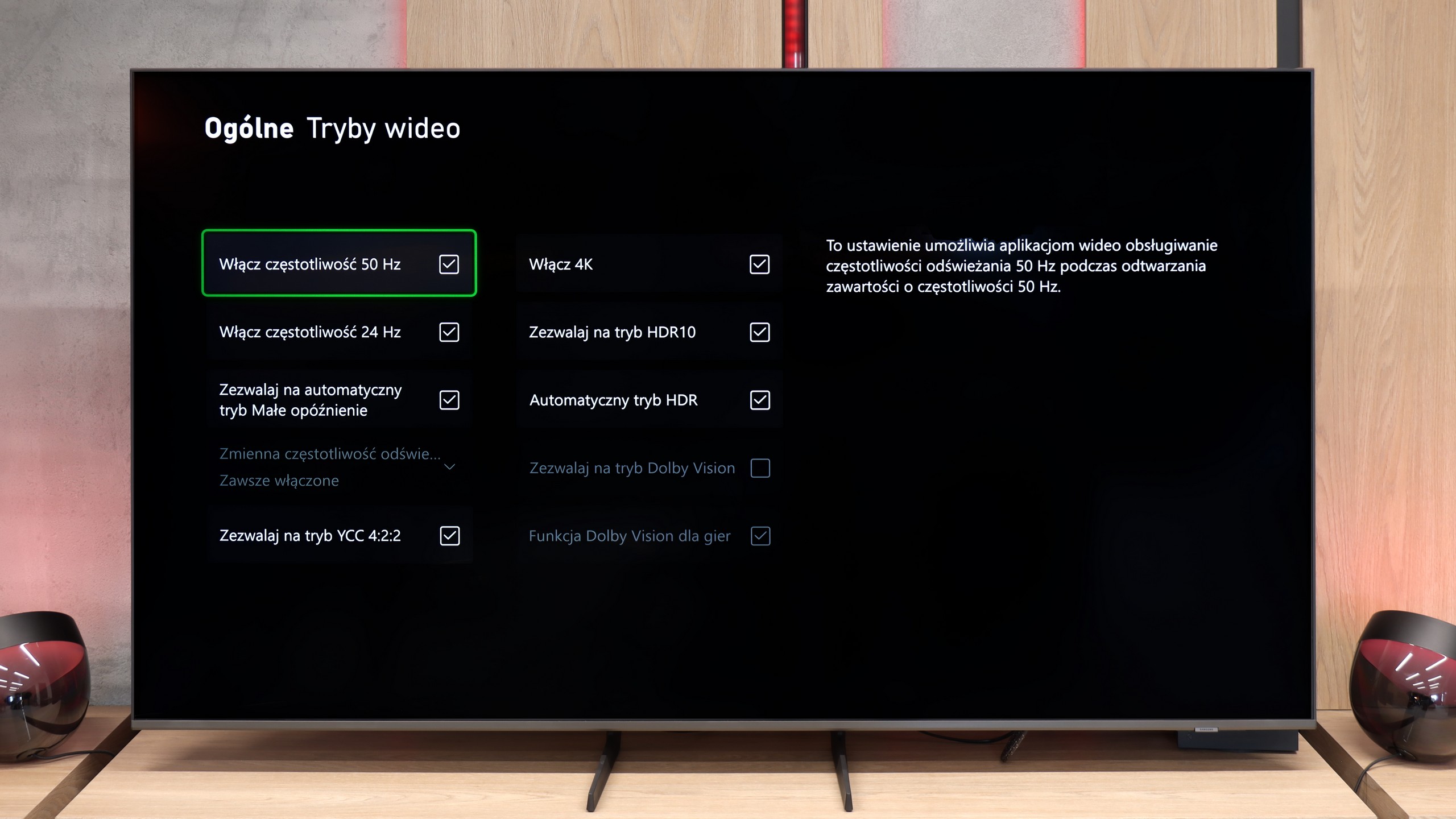

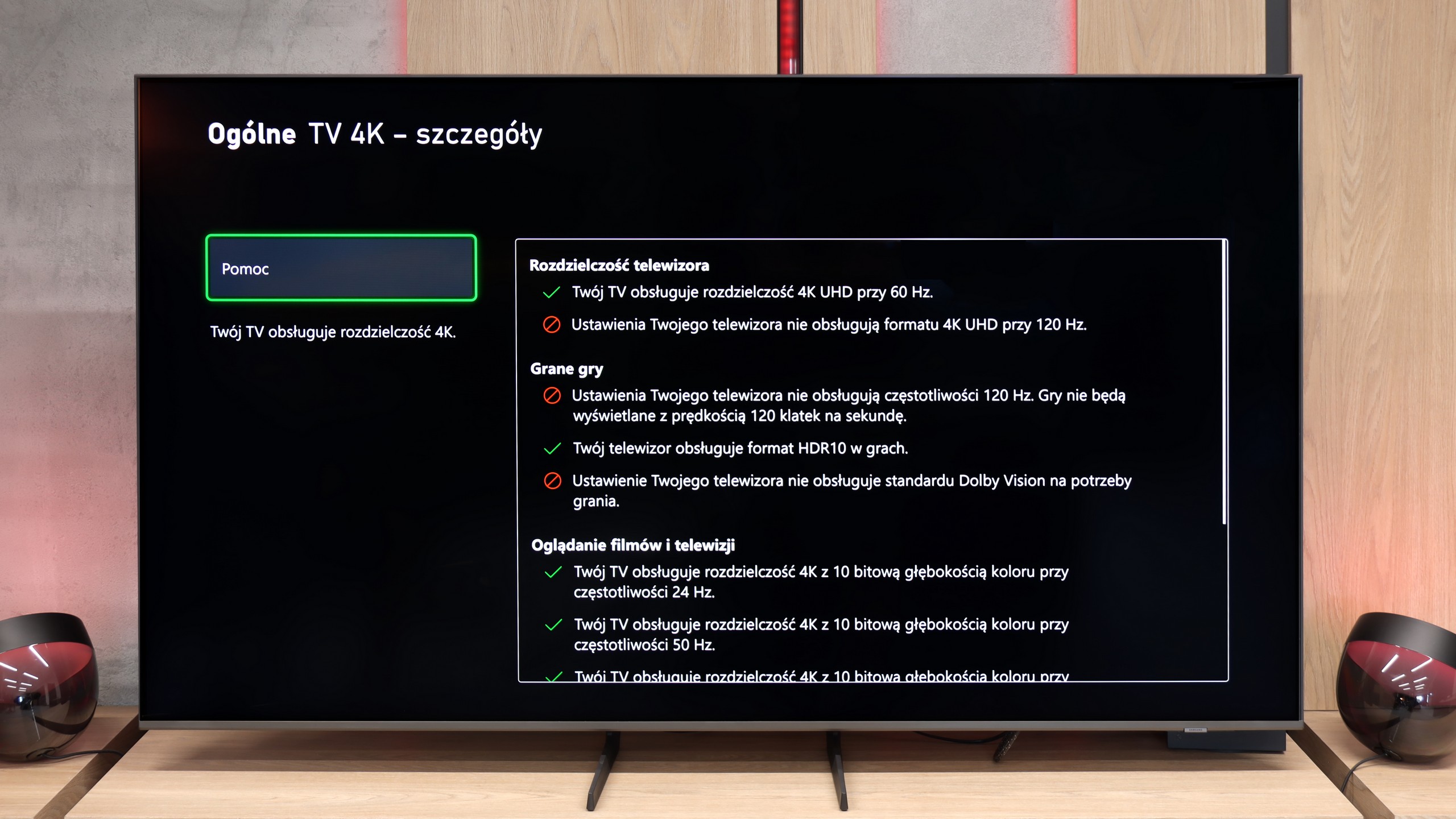

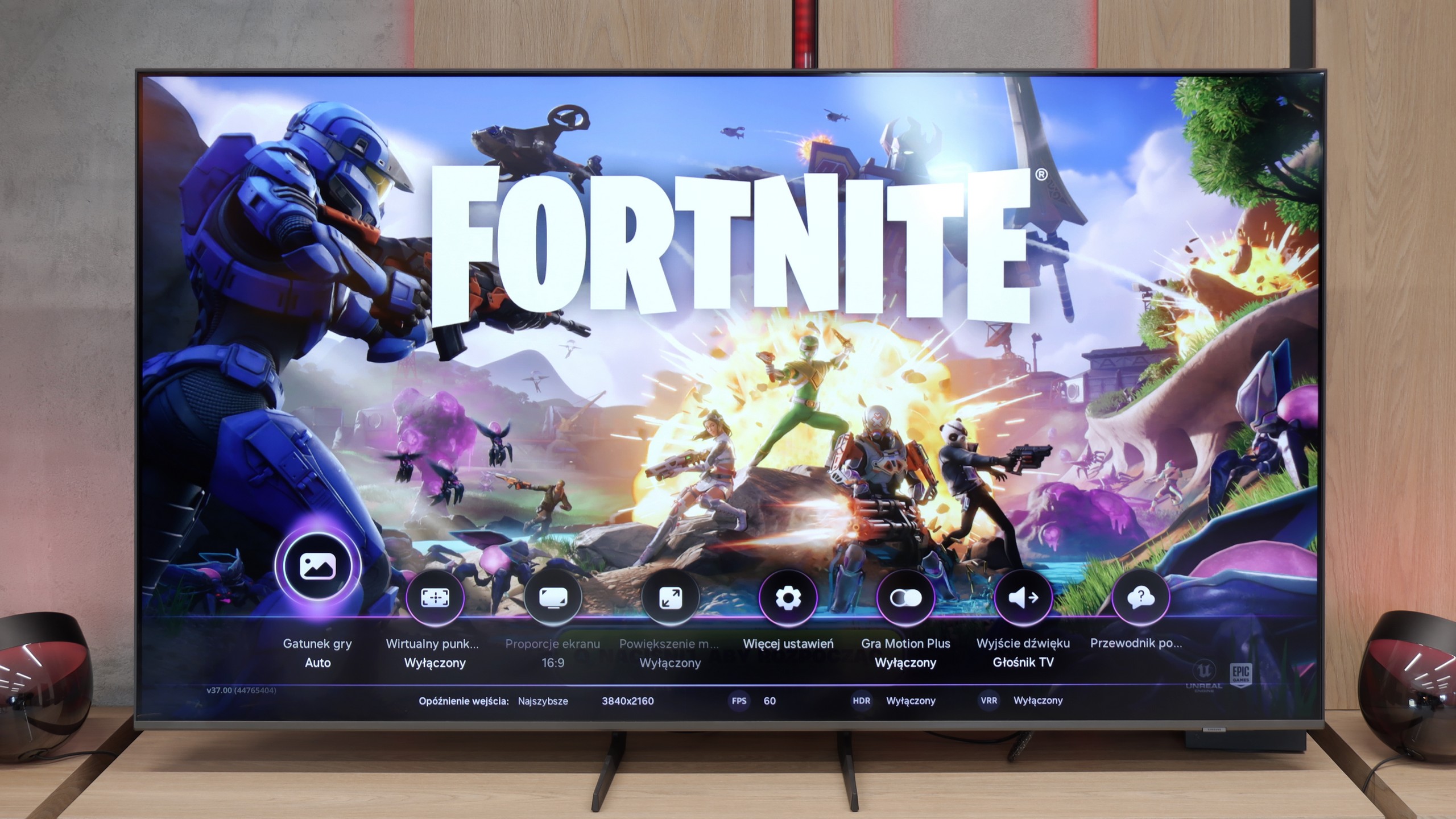

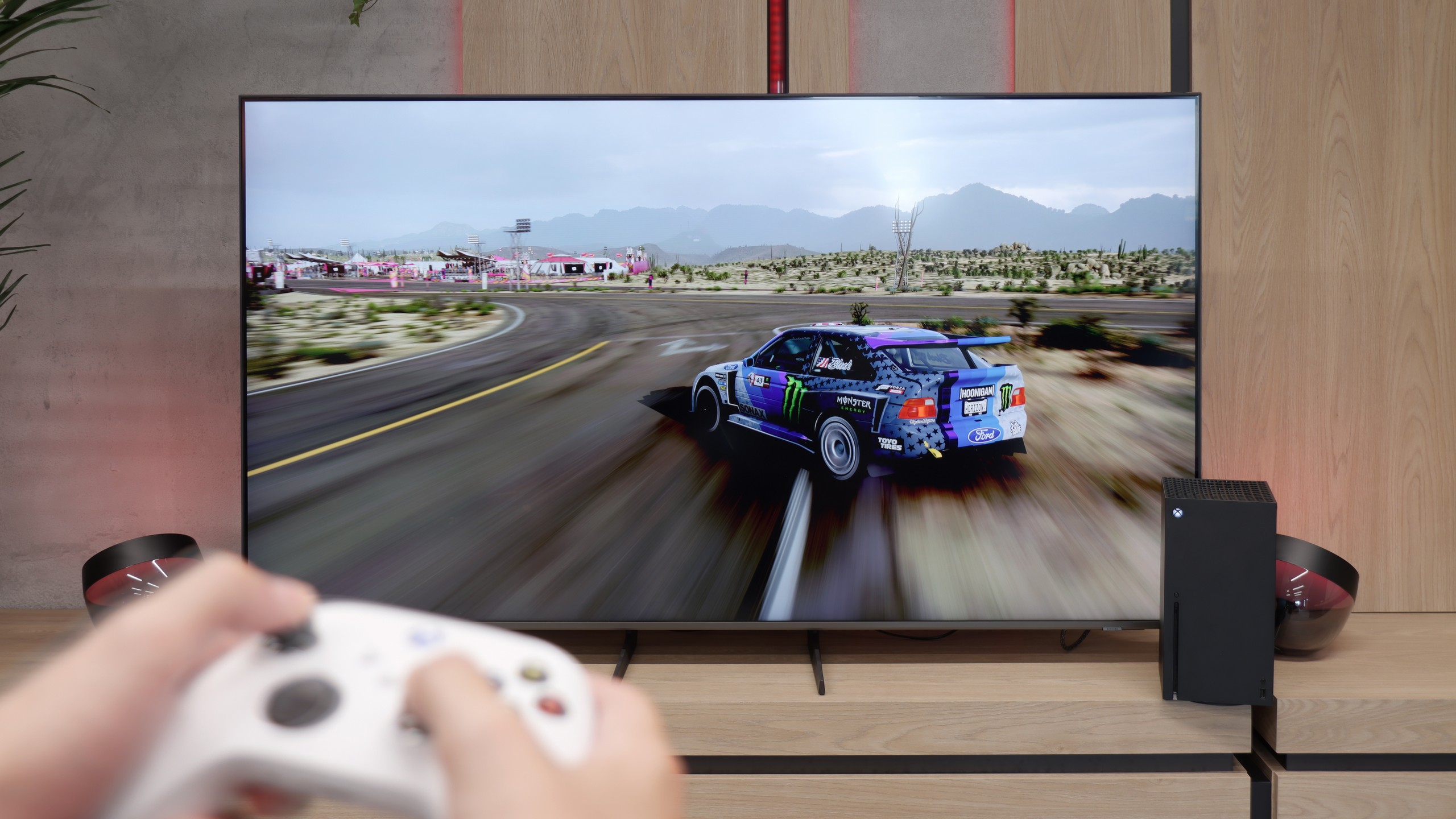
The Samsung DU7192 television is equipped only with HDMI 2.0 ports, which isn’t surprising considering the device’s price and its consumer profile. Therefore, it’s also logical that we won’t achieve maximum quality on the latest generation consoles. That’s why it only features the most basic options for gamers, namely ALLM. It’s a pity the manufacturer didn’t implement at least a GameBar, as this is now standard, even in lower-end TVs, and could offer significant conveniences in terms of quickly changing settings.
It's not entirely clear what Samsung has messed up this year with its TVs, but the Q8F isn't free from all the confusion with updates and shortcomings. While its older cousin, the Q67D, could still be recommended with a clear conscience to casual gamers, it's hard to find a reason to do so here. Aside from the automatic game mode and the attractively designed Game Bar, we get practically nothing that could appeal to gamers. The lack of proper HGiG implementation is a major issue, especially since the feature simply disappeared after the 1126 update. The situation with VRR is even worse. Even though it appears in the manufacturer's brochures and shows up in the Game Bar, we couldn't get it to work. The Xbox Series X console wouldn't allow it to be activated at all, and the option remained greyed out and inactive. It's difficult to praise such a TV even to casual gamers, which is a shame because Samsung has had a strong selling point in the gaming segment for years.
Input lag
10/10
9.9/10
SDR
HDR
Dolby Vision
The results of the input lag measurements in DU7192 are at a high level, regardless of the signal or resolution. All gamers will surely appreciate the manufacturer's efforts, thanks to which a game running at 4K 60 Hz with HDR will have only 11 ms of lag, which is practically unnoticeable even in online games.
Fortunately, when it comes to gaming, Samsung didn't try to "improve" anything and the input lag remained at an excellent level. Results hovering around 10–15 ms mean that the delays are practically unnoticeable. The controls are instant, and the responses from the console or computer appear on the screen without any noticeable delay. In this regard, the Q8F performs exceptionally well and it's hard to fault it.
Compatibility with PC
6/10
6/10

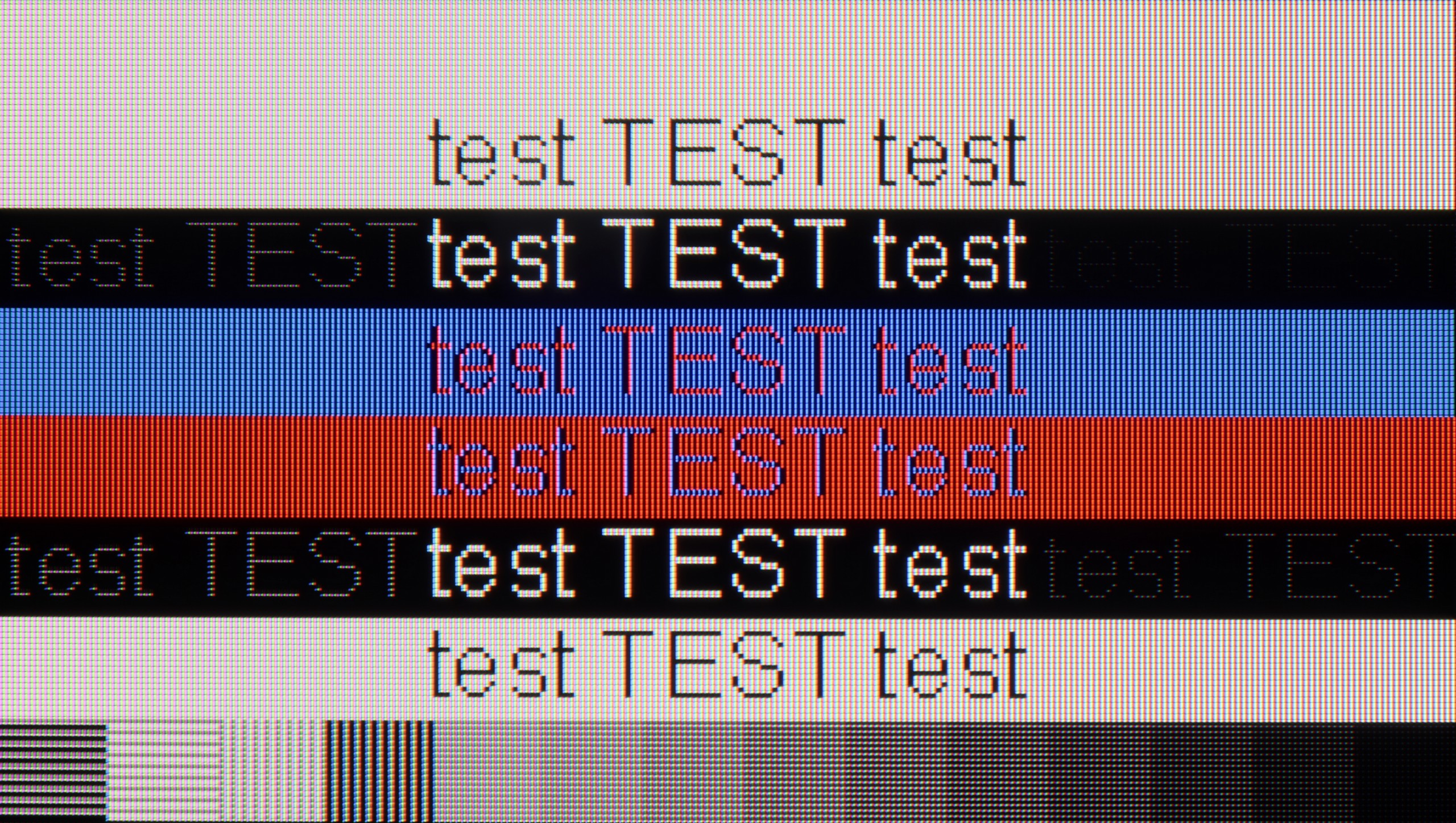
After connecting the television to the computer and wanting to use it as a monitor, we can expect a low input lag of 11 ms, which is practically imperceptible on the mouse-screen-eye line. Thanks to the proper implementation of chroma 4:4:4, the readability of fonts is at a high level, so you can confidently connect the DU7192 to a computer as a monitor and expect comfortable work with text. It's also worth mentioning that such good cooperation with the computer is also due to the IPS panel itself, which allows for very sharp fonts due to its construction. The subpixel layout is BGR, which does not negatively affect the use of the television as a monitor. However, since operating systems are not adapted to such a subpixel format, this may cause slightly less sharp outlines. This is practically negligible, and only a handful of people might notice it. As for gaming, the lack of G-Sync and a frequency of 60 Hz are limitations that may disappoint computer game enthusiasts, especially those requiring quick reactions. For this reason, the television receives a lower rating in this category, although it performs decently as a monitor for everyday work.
While playing on the Q8F isn't exactly the most attractive option—it's lacking modes with lower resolution and higher refresh rates, plus there are issues with VRR (G-Sync) and the panel is limited to 60 Hz—it performs excellently as a monitor for work. Font readability is at a very high level, so working with text or spreadsheets in Excel is a pure pleasure. In this regard, the Q8F could be a viable alternative to a large office monitor.
Viewing angles
6.8/10
3.4/10
IPS panels, unlike VA panels, are known for having very good viewing angles. This is also true for Samsung DU7192, as even with a slight change in angle, the colours maintain a very good hue and saturation. However, it is worth noting the drop in contrast, which is typical for LCD panels.
The viewing angles on the Q8F can be described as average, resulting from the applied VA matrix. Watching the television head-on, the picture looks very good, but just shifting slightly to the side causes it to start fading and losing contrast. Colours gradually lose their saturation, and black takes on a greyish hue. This is a typical limitation of this type of panel, and it’s hard to expect miracles here. Compared to IPS matrices, the difference is clear — while these have weaker contrast, they hold colour better at an angle. The Q8F is best suited for a classic setup, where viewers sit centrally in front of the screen. If you’re planning screenings with a larger group, with people spread wider across the living room, the effect may not be as satisfying.
TV efficiency during daytime
2.8/10
5.6/10

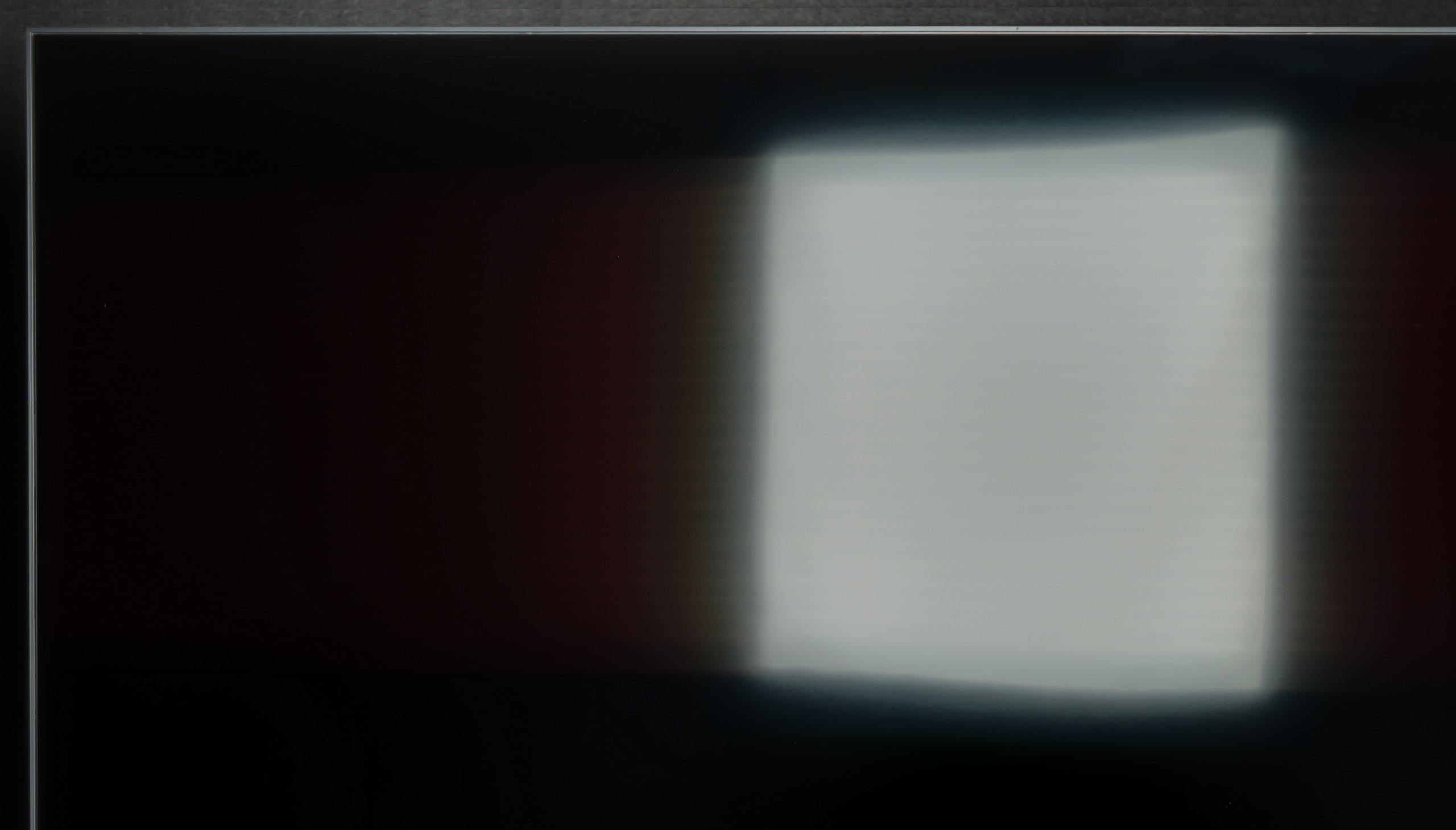

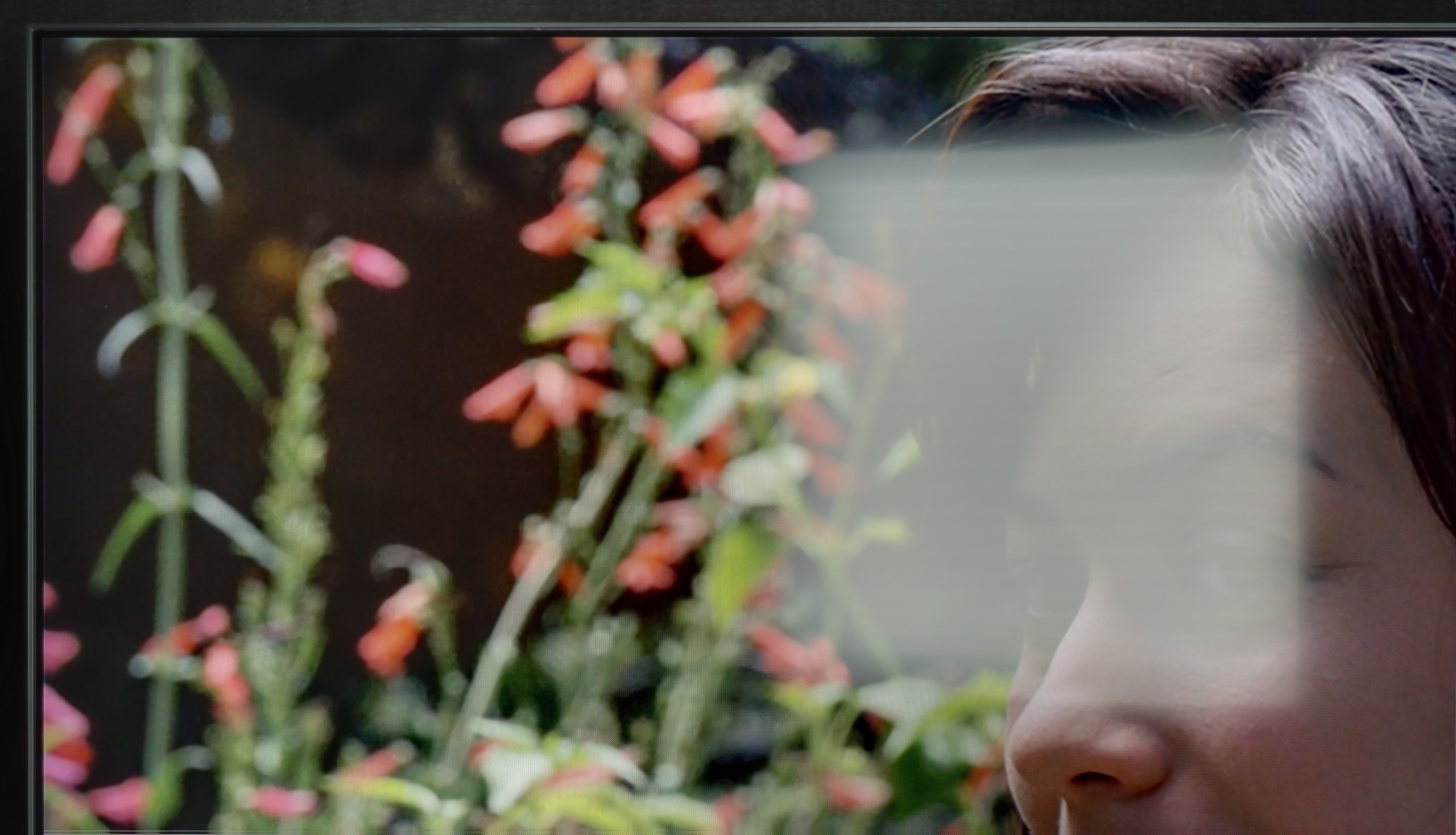
Matrix brightness
Average luminance SDR
Samsung Q8F: 430 cd/m2
Samsung DU7192 (IPS): 227 cd/m2
The Samsung DU7192 panel has a satin finish; unfortunately, this did not help the tested television in reducing reflections directly hitting the panel. The situation is not improved by the fact that the maximum brightness of the panel in SDR materials is 227 nits. One could say that the tested television is rather not suited for daytime use.
The Q8F performs quite well during the day. Its brightness hovers around 450 nits, which proves to be a sufficient level for moderately bright living rooms. It's not a TV that will win a battle against sunlight streaming directly through the window, but in typical home conditions, the picture remains clear and appealing. A big plus is the satin finish of the panel, which effectively reduces light reflections and helps maintain colour saturation even when the room is bright. This makes watching series during the day or evening sports broadcasts with the lights on no problem. The Q8F doesn't aspire to be a cinema TV in full sunlight, but as a daily screen in normal home conditions, it performs really well.
Details about the matrix
Subpixel Structure:

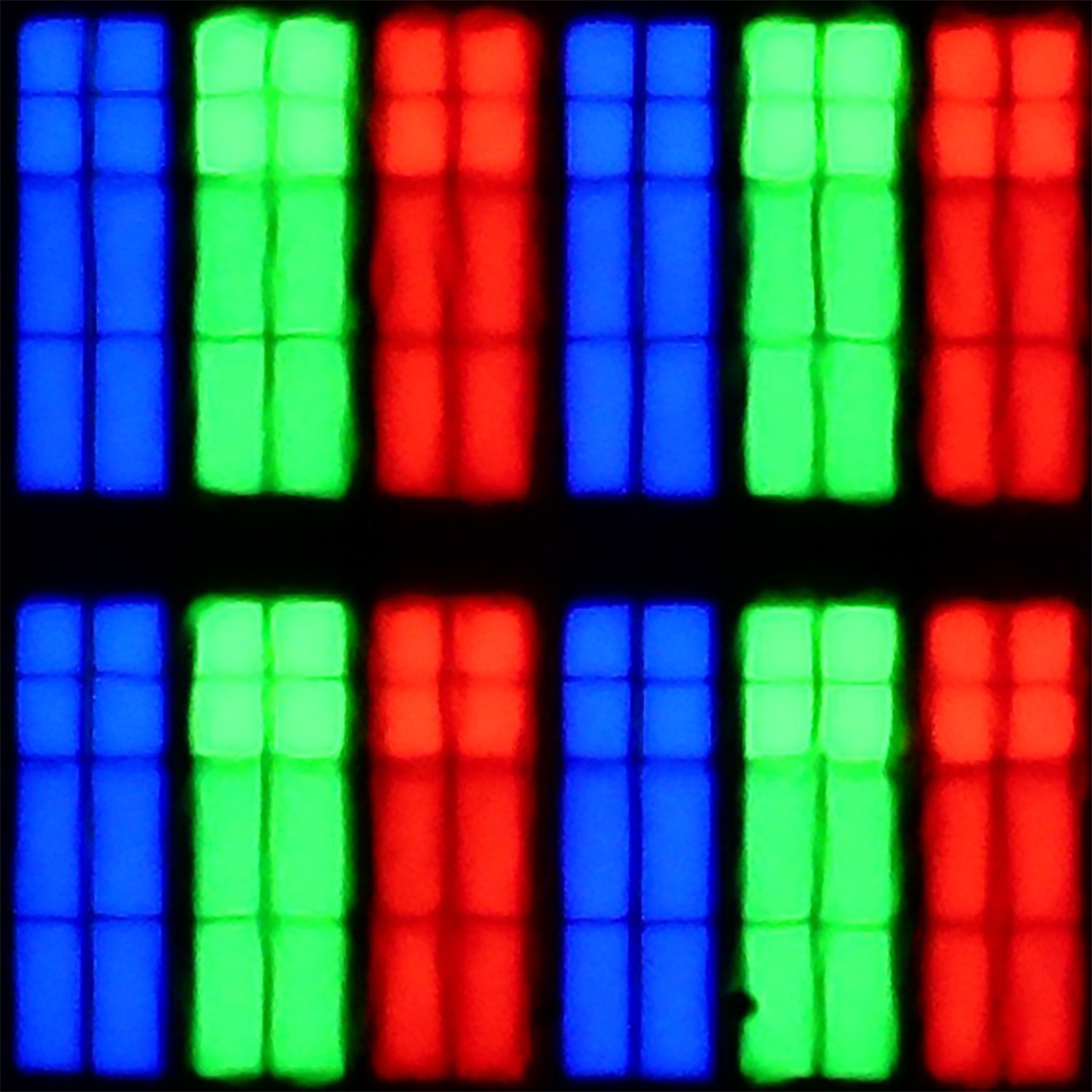
Panel uniformity and thermal imaging:

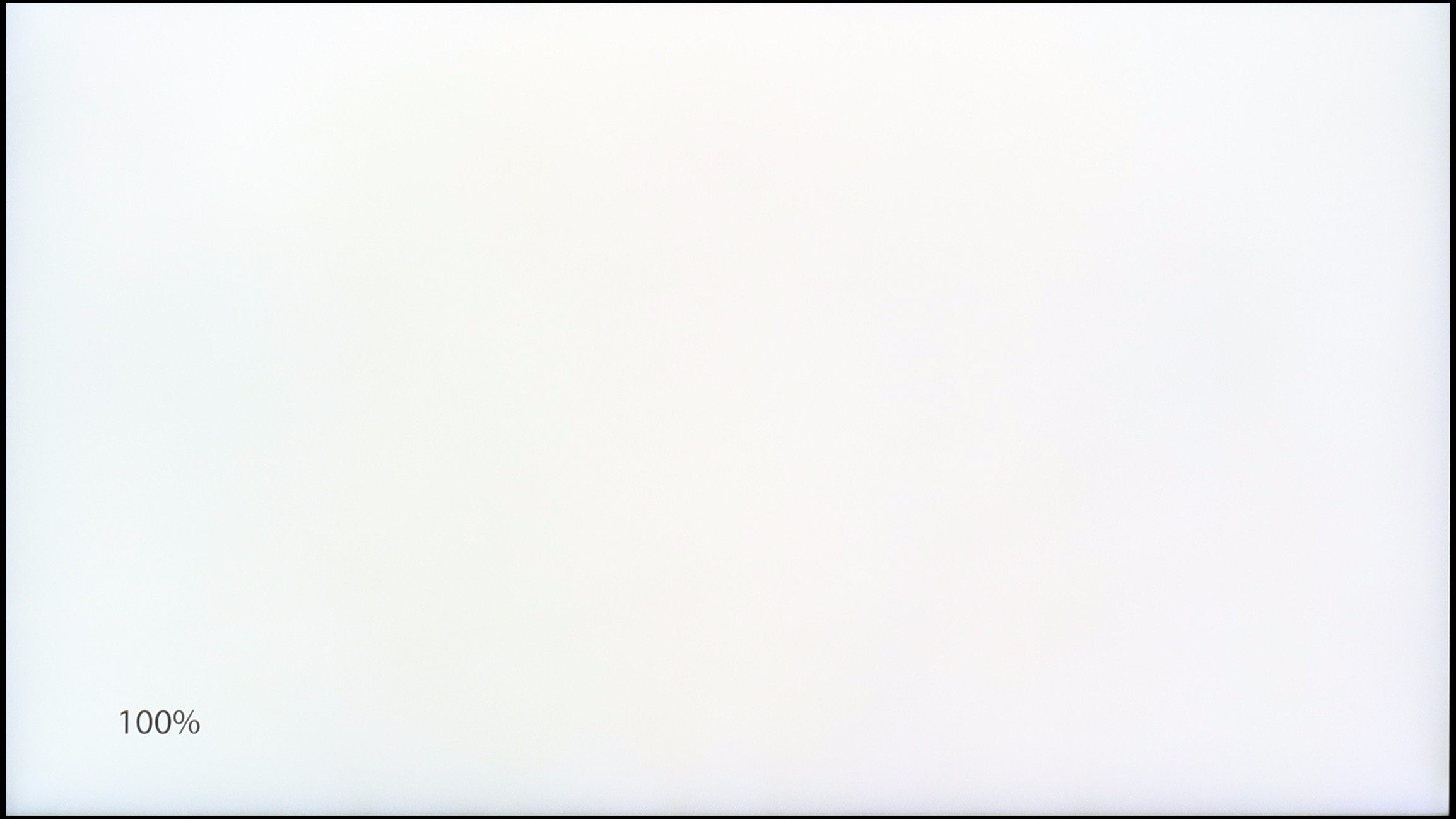
Samsung DU7192 (IPS)
Samsung Q8F
TV features
5.5/10
7.3/10
- HDMI inputs3 x HDMI 2.0, 0 x HDMI 2.13 x HDMI 2.0, 0 x HDMI 2.1
- OutputseARC (HDMI), ARC (HDMI)Toslink (Optical audio), eARC (HDMI), ARC (HDMI)
- Network InterfacesWi-Fi 2.4GHz, Wi-Fi 5GHz, Ethernet (LAN) 100MbpsWi-Fi 2.4GHz, Wi-Fi 5GHz, Ethernet (LAN) 100Mbps
- TV receptionDVB-T, DVB-T2, DVB-S, DVB-S2, DVB-CDVB-T, DVB-T2, DVB-S, DVB-S2, DVB-C
Classic features:
- Recording to USB (terrestrial TV)
- Recording programming
- Picture in Picture (PiP)
- RF remote control (no need to aim at the screen)
- Backlit remote control
- Teletext
- Audio only mode
- Bluetooth headphones support
- Simultaneous Bluetooth headphones & TV audio
Smart features:
- AirPlay
- Screen mirroring (Windows Miracast)
- Voice search
- Voice search in native language
- Ability to connect a keyboard and mouse


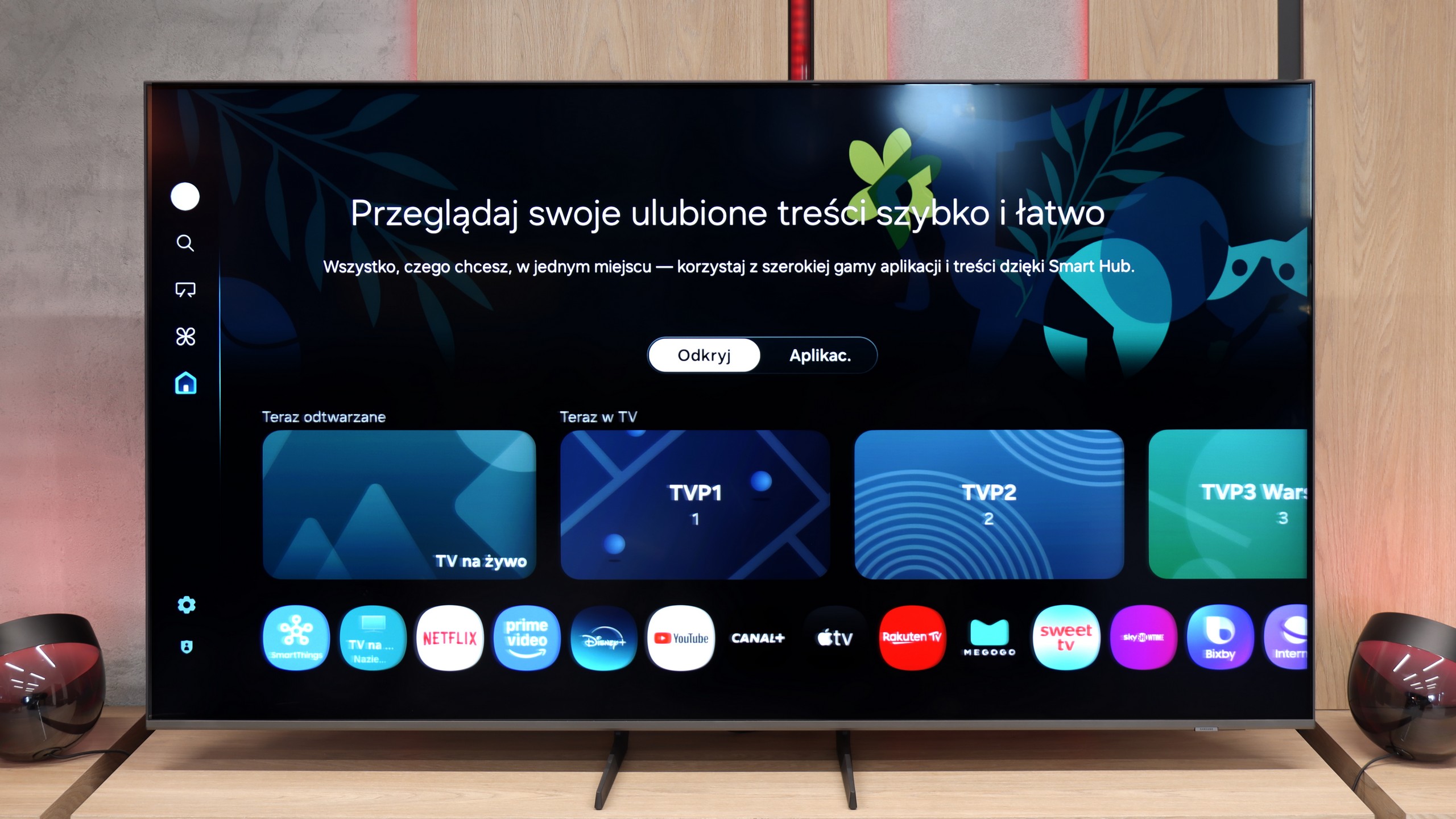
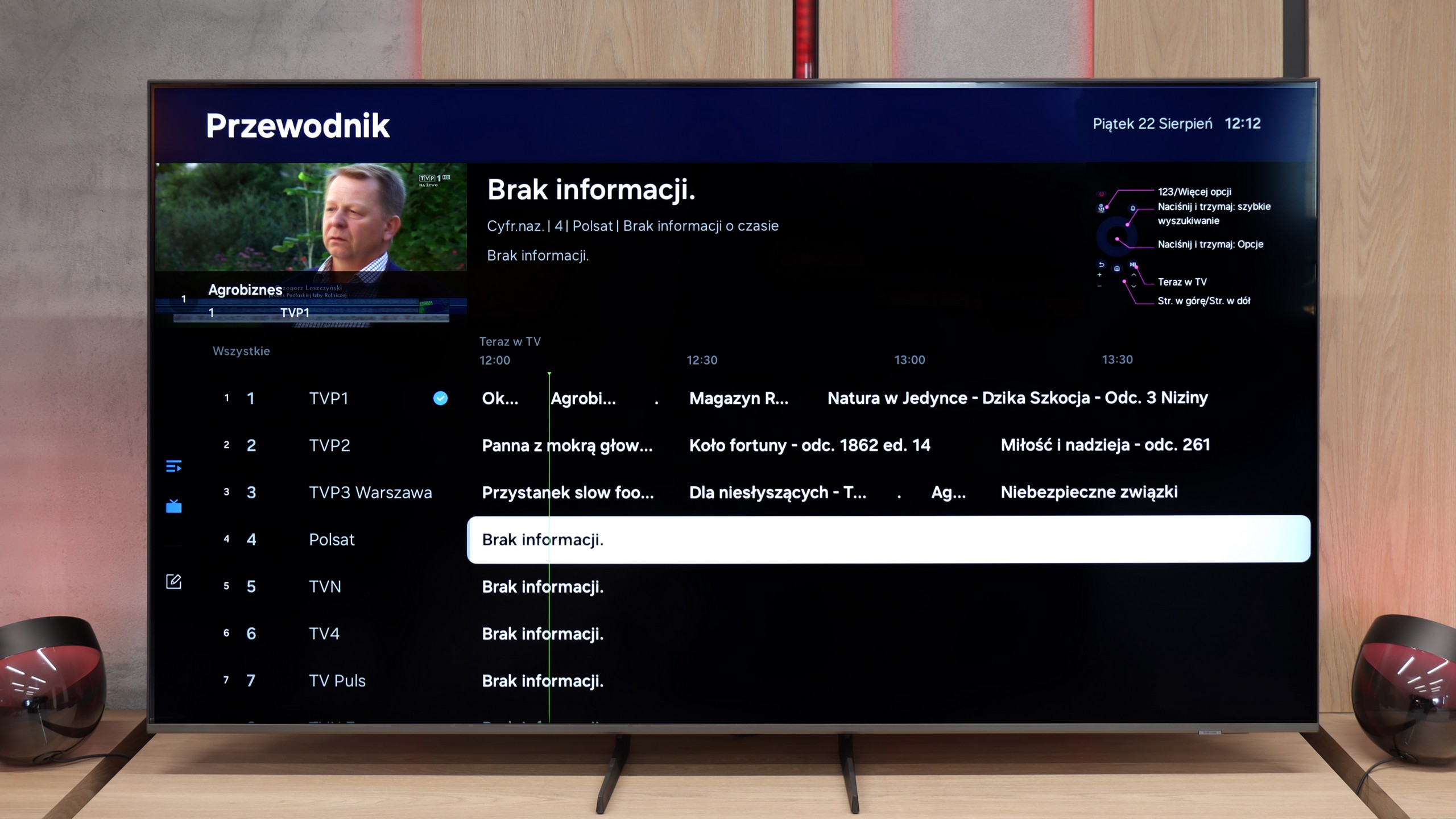
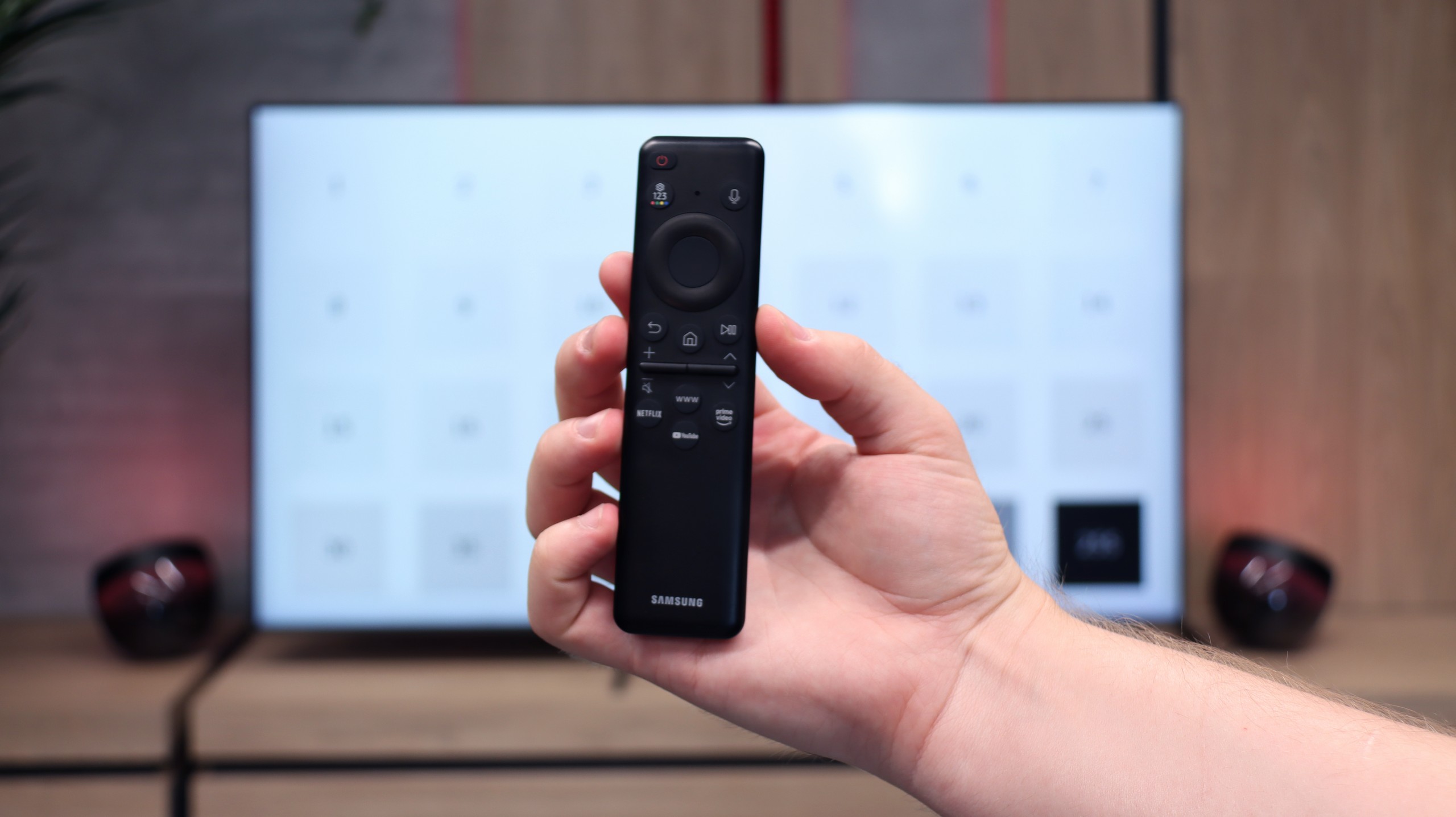
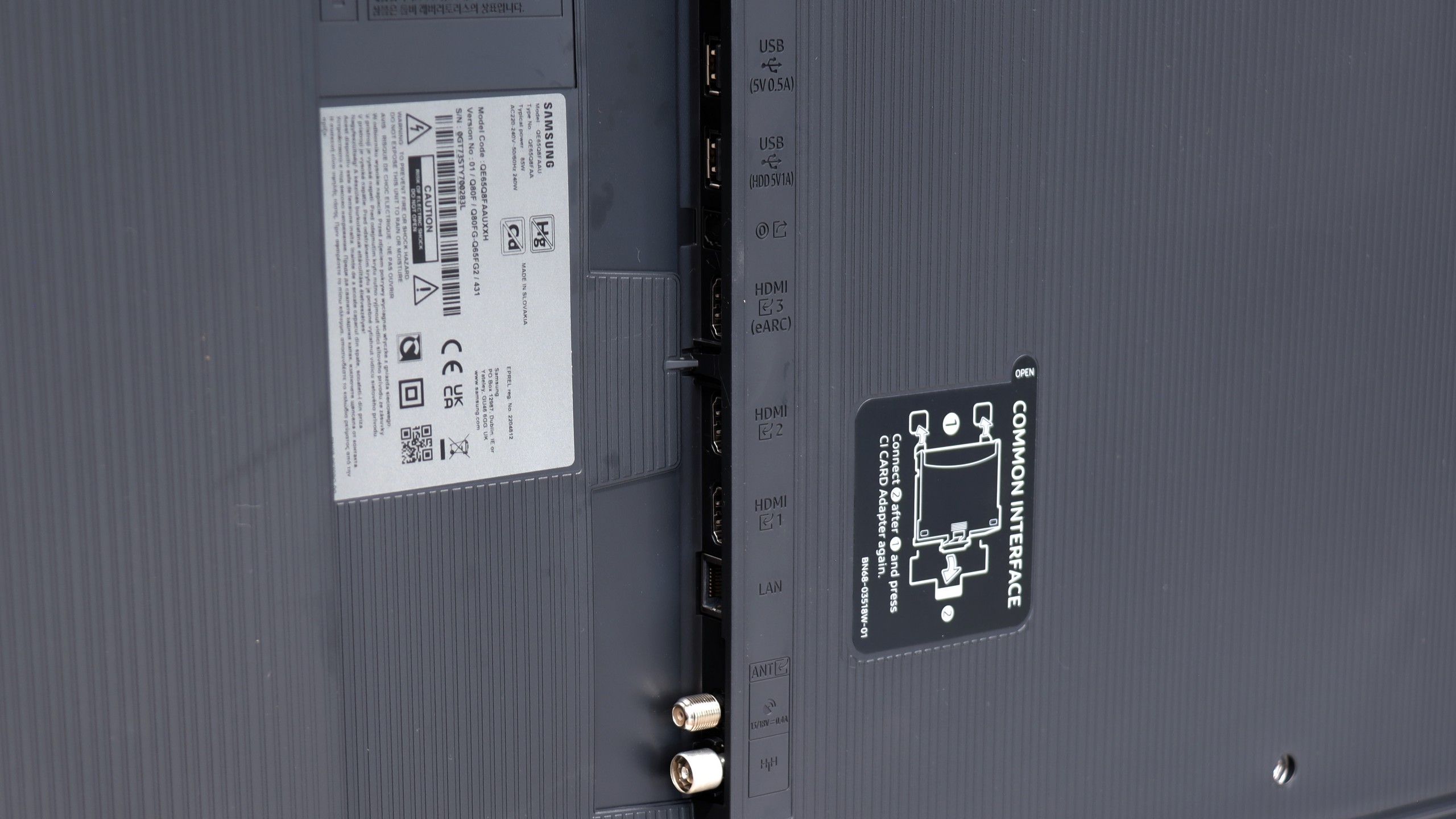
The operation of Samsung DU7192 is managed by the proprietary Tizen system. This software is quite well-known as the manufacturer has been developing it in their televisions for a really long time. Its main advantage is smooth operation and the lack of significant stutters, which we can confirm through conducted tests. The biggest downside, however, is its closed nature. Although the app store is quite extensive, we are still at the mercy of the manufacturer. Therefore, we will not be able to install missing items, even from a USB drive. On the other hand, a benefit, especially for Apple device users, is the implementation of AirPlay functionality, allowing for easy screen mirroring from a device to the television. Fortunately, Samsung has also provided the option to connect a keyboard and mouse for much quicker navigation through the television's menu. It’s worth mentioning that the manufacturer has fortunately included a Bluetooth remote this year, which was often not the case in the past. The Tizen system has one more advantage. It integrates very well with external devices, such as the NC+ decoder and soundbars. The connection process is very quick and does not require special skills.
The Tizen system is very efficient software, which is certainly a strong advantage of the television. Although more advanced users may complain about the lack of KODI, the rest will be satisfied.
SmartTV Features: Tizen
In terms of smart features, the Q8F is right up there with what Samsung has made us accustomed to. It comes with the Tizen system – fast, intuitive, and well integrated with other devices. AirPlay, screen mirroring, and simple voice commands work seamlessly, so the basics are ticked off perfectly. Added to this is SmartThings, an app that turns the TV into the hub of a home ecosystem. You can connect a washing machine, vacuum cleaner, light bulbs, or speakers and control everything from one place, including the TV. There are also plenty of apps in Tizen for watching movies and series – Netflix, YouTube, Disney+, and Prime Video are all readily available. However, it should be noted that Tizen is a closed system, so if someone is hoping to install less popular programs, they might be disappointed.
Traditional Television
Traditional television falls short. The Q8F simply serves as a screen here – it will display the picture, but additional features like USB recording or PiP mode are absent. The remote is small and very minimalist. It looks modern and can be charged via solar batteries on the back cover or through USB-C, but it's worth noting that it might not suit everyone – particularly older users may miss traditional buttons. However, it's fair to say that Samsung has been consistently steering its TVs (and competitors who are copying some of their ideas) towards the smart home direction rather than towards devices "for grandma and grandpa". Given the enormous popularity of the brand, one can assume that most users, even the older ones, have already gotten used to the fact that the era of remotes with a whole range of rubber buttons is slowly coming to an end.
Playing files from USB
9.1/10
9.1/10
Supported photo formats:
Maximum photo resolution:

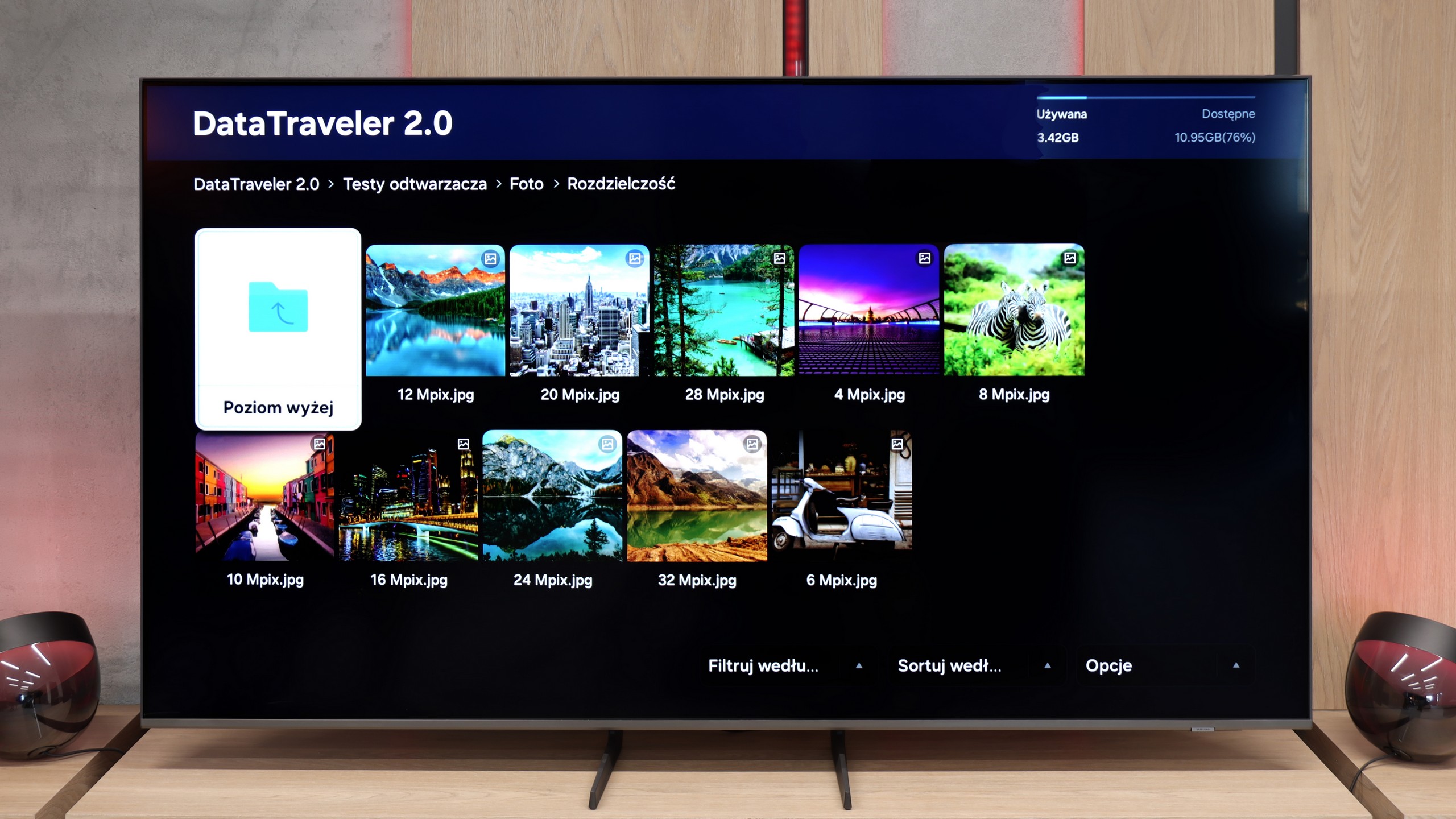
The built-in player Samsung DU7192 is a significant advantage. It handled almost all video and audio files prepared for the testing process exceptionally well. The only exceptions in this regard are, of course, the Dolby Vision format (which is not surprising) and less popular codecs. It also deserves a plus for supporting Polish characters and the ability to change font colours. However, it struggles more with image formats, as it only supports the popular JPEG. There's definitely a lack of formats like PNG or Apple's HEIC.
Samsung Q8F handles playback of files from USB quite efficiently. It supports almost all popular video formats as well as photos, so you can easily load a holiday movie or a family album. There are occasional exceptions with less popular photo formats, but the essential JPEG works flawlessly, which will be crucial for most users. It's a shame that Tizen doesn't allow the installation of alternative players, such as VLC. Then even less popular formats wouldn't pose any problem.
Apps
8.7/10
8.7/10














































Sound
5.4/10
6/10
- Maximum volume83dB84dB
- Dolby Digital Plus 7.1
- Dolby True HD 7.1
- Dolby Atmos in Dolby Digital Plus (JOC)
- Dolby Atmos in Dolby True HD
- DTS:X in DTS-HD MA
- DTS-HD Master Audio
When assessing the sound from the DU7192, it should be noted that its speakers are not the best. Unfortunately, this carries consequences in the form of very poor sound quality. We recommend using half of the volume scale due to potential distortion. Fortunately, the television offers a wide range of audio codecs, including the two most important ones: DTS-HD Master Audio and Dolby Digital Plus, which allow for the transmission of surround sound to an external device. This ensures high sound quality that will satisfy users seeking better audio experiences.
The sound on the Q8F can be described as acceptable. You can hear a slightly defined bass, but it's really minimal – the slim design of the television simply doesn't allow the pair of 2 × 10 W speakers to spread their wings. This is a typical scenario for most televisions: if someone cares about truly cinematic experiences, it's worth considering a soundbar. Samsung has a really wide range in this category across different budgets, so it's easy to find something suitable. The television itself is fine for watching traditional TV and series occasionally, but you wouldn't expect much in terms of audio excitement.
Acoustic Measurements
No acoustic data
84dBC (Max)
75dBC
